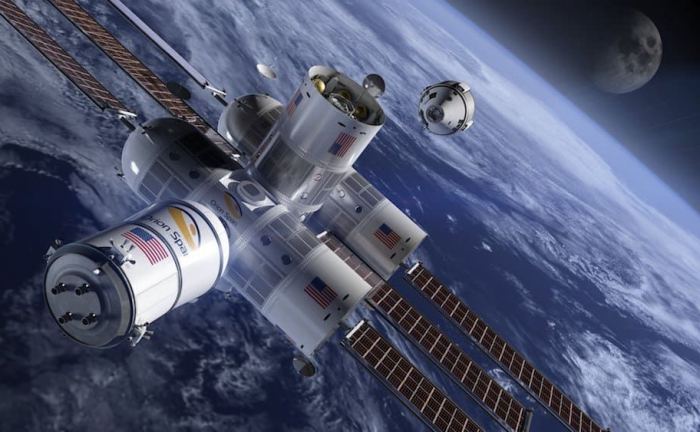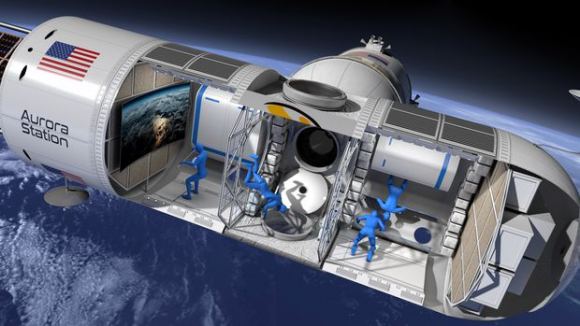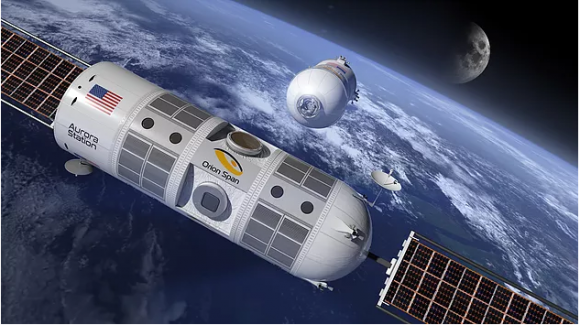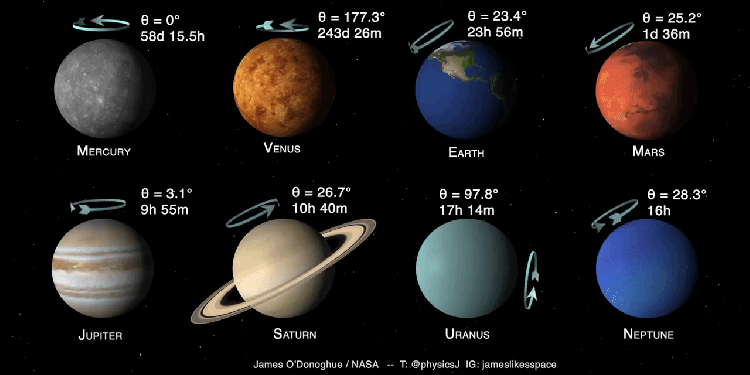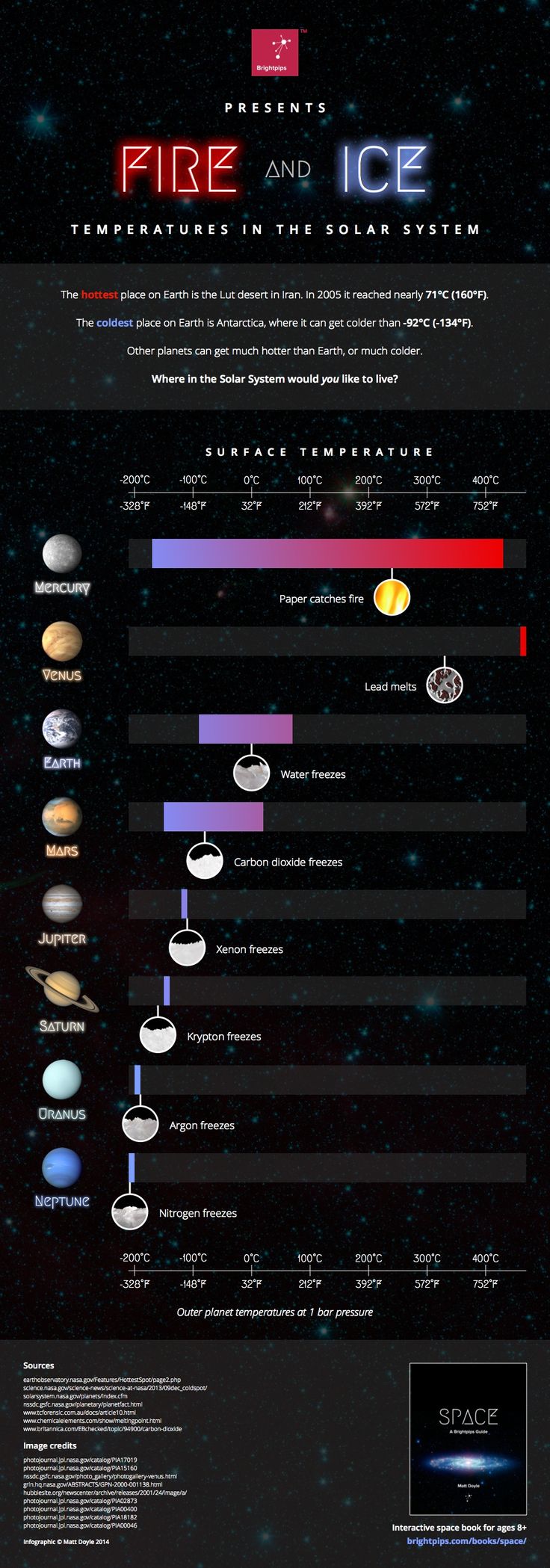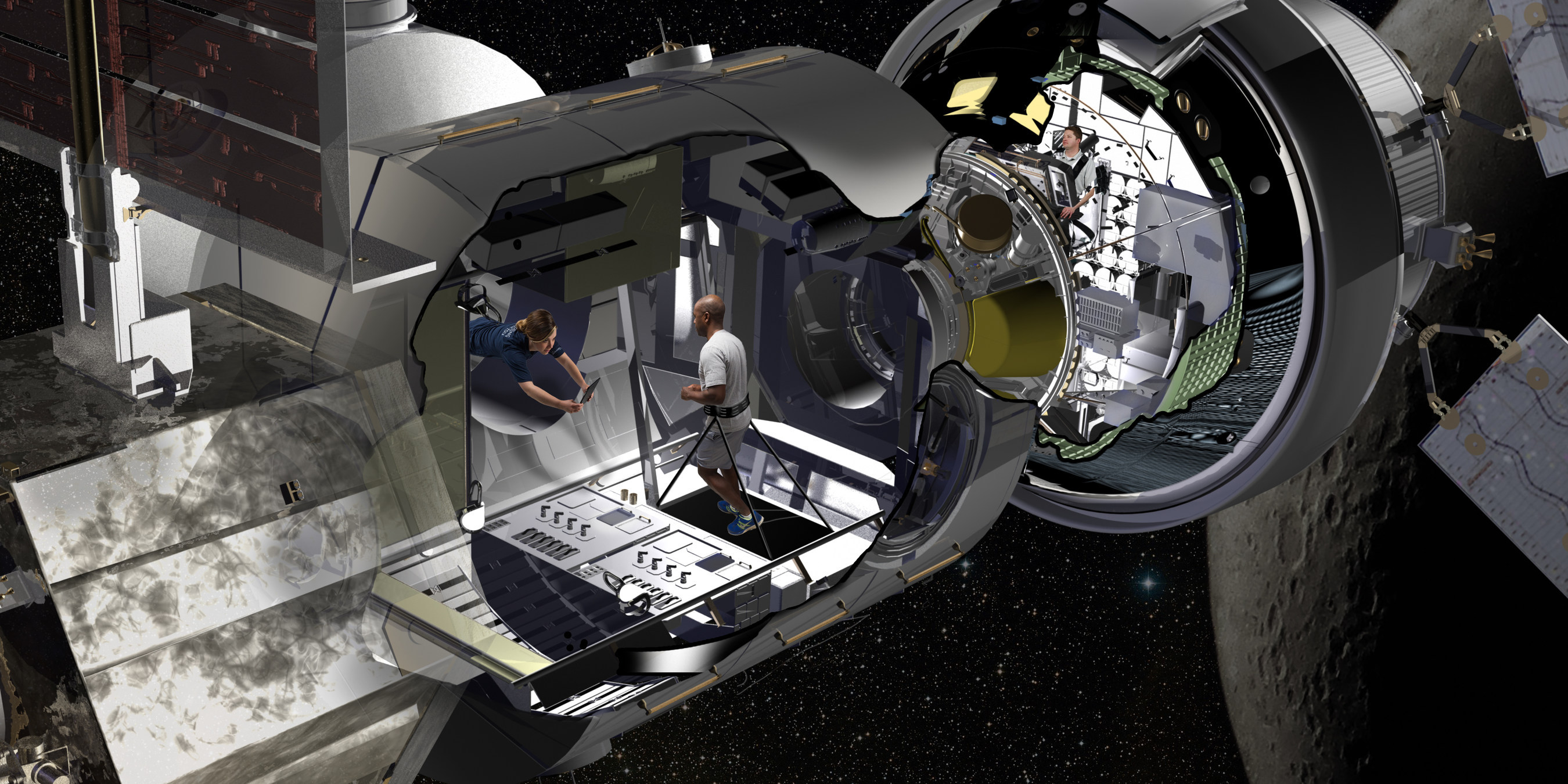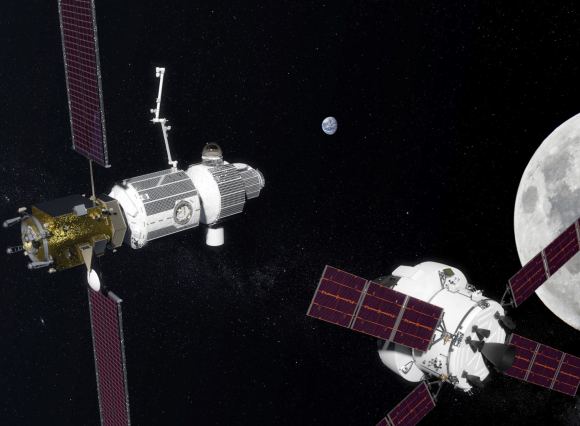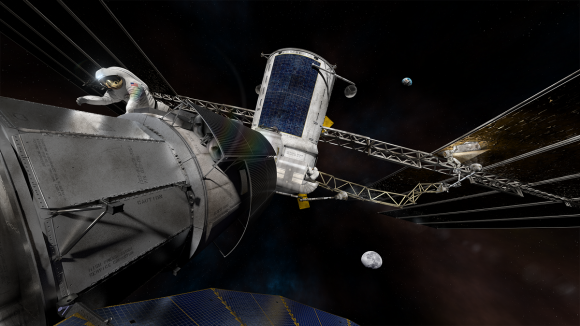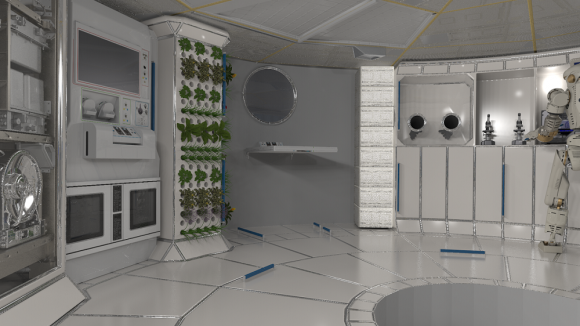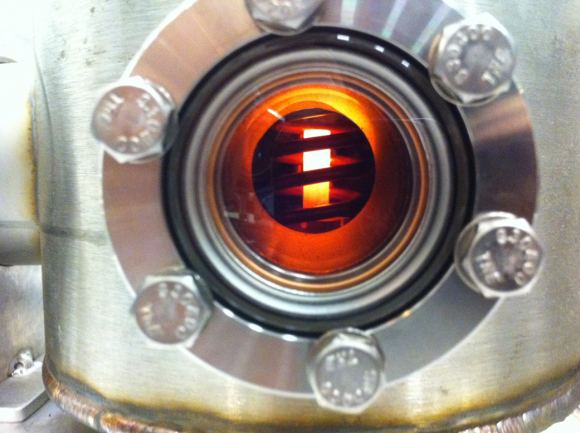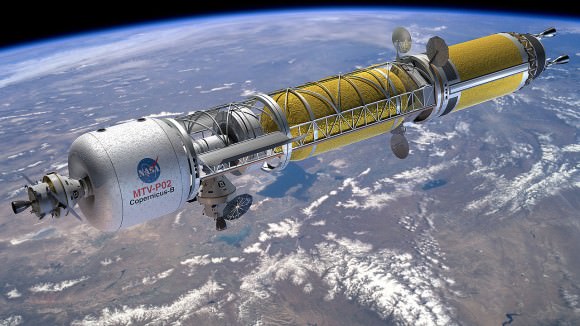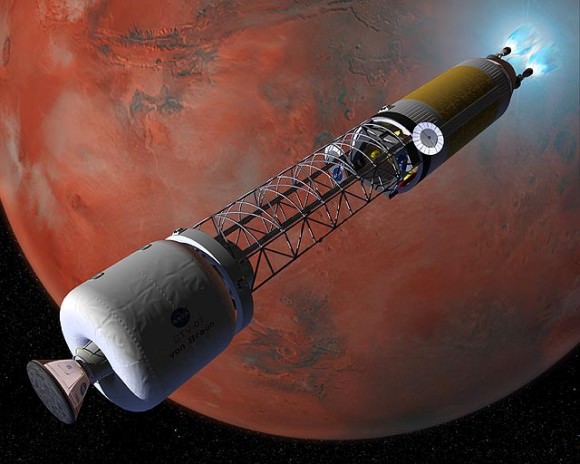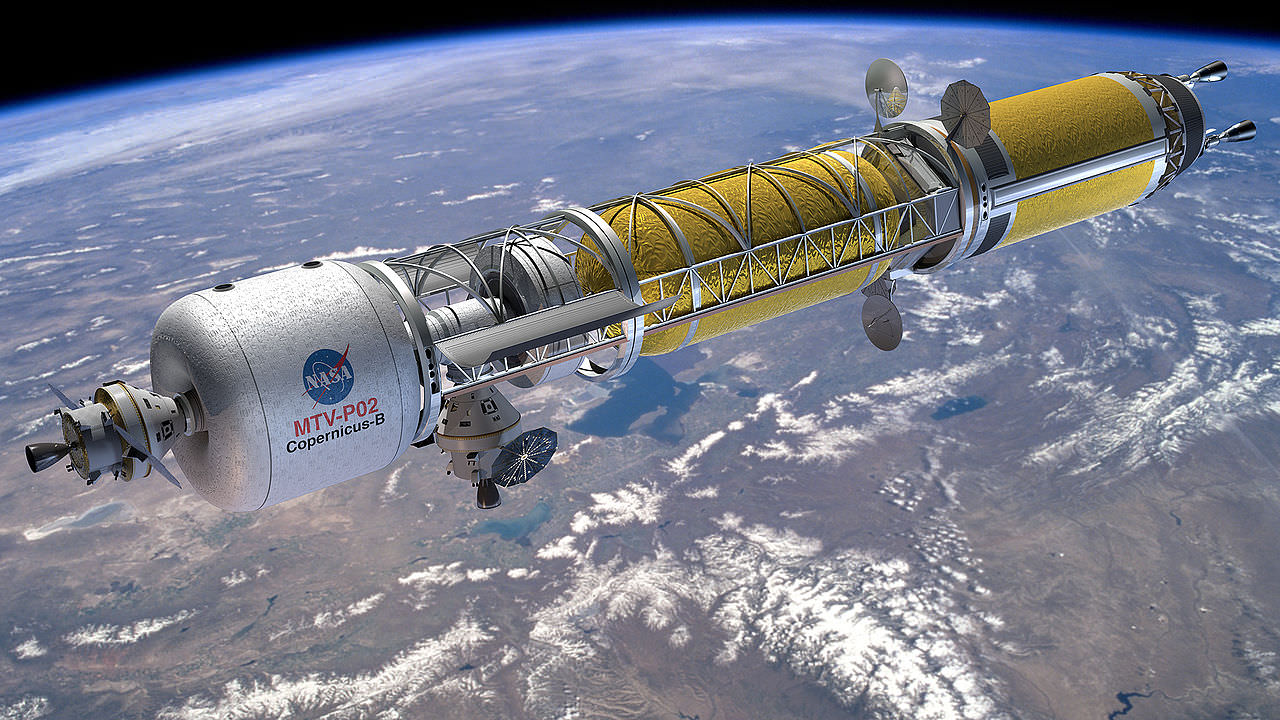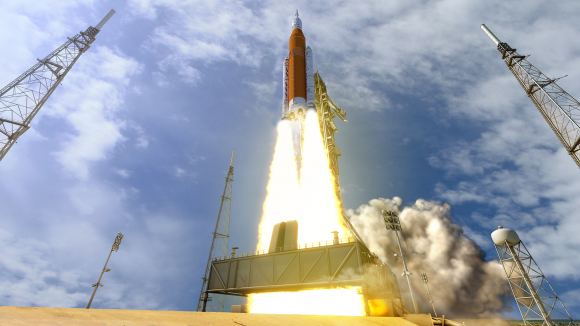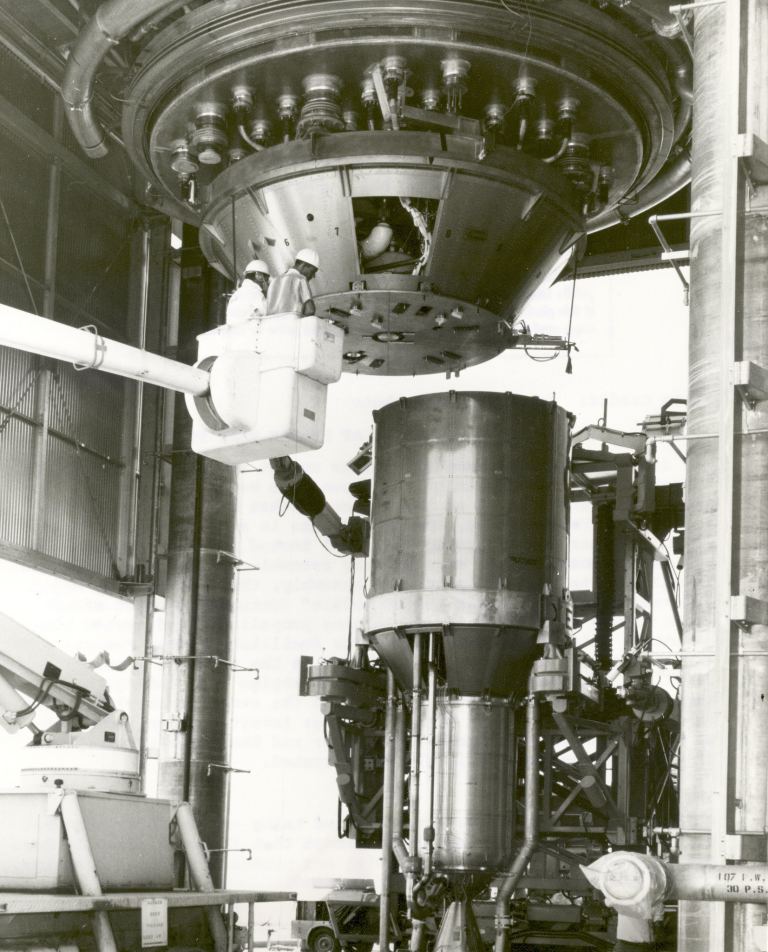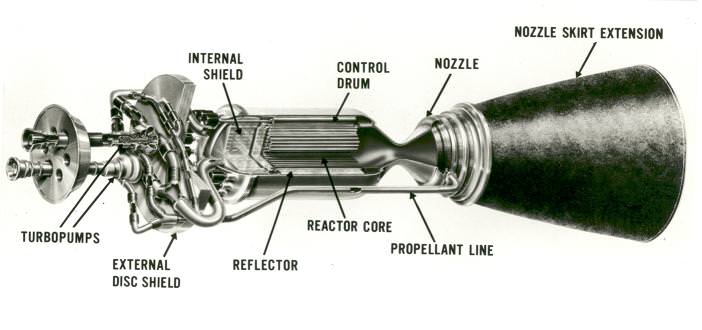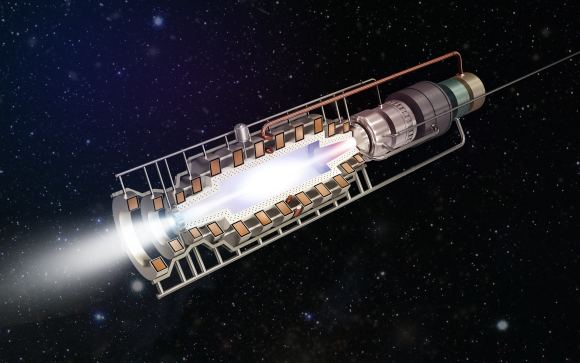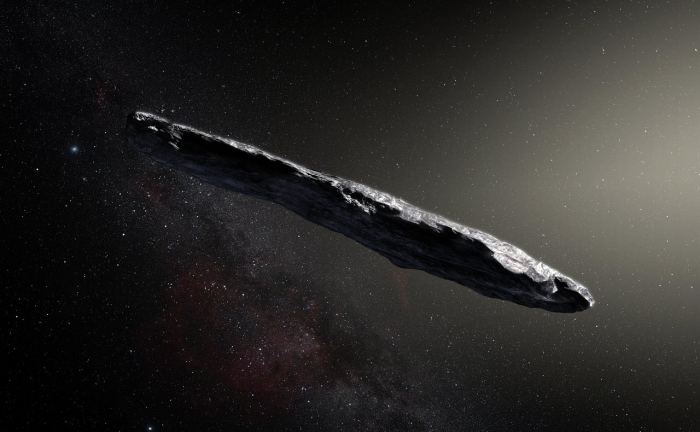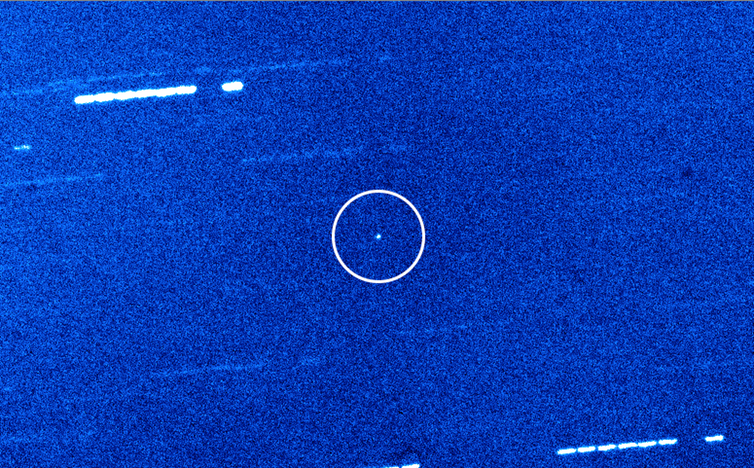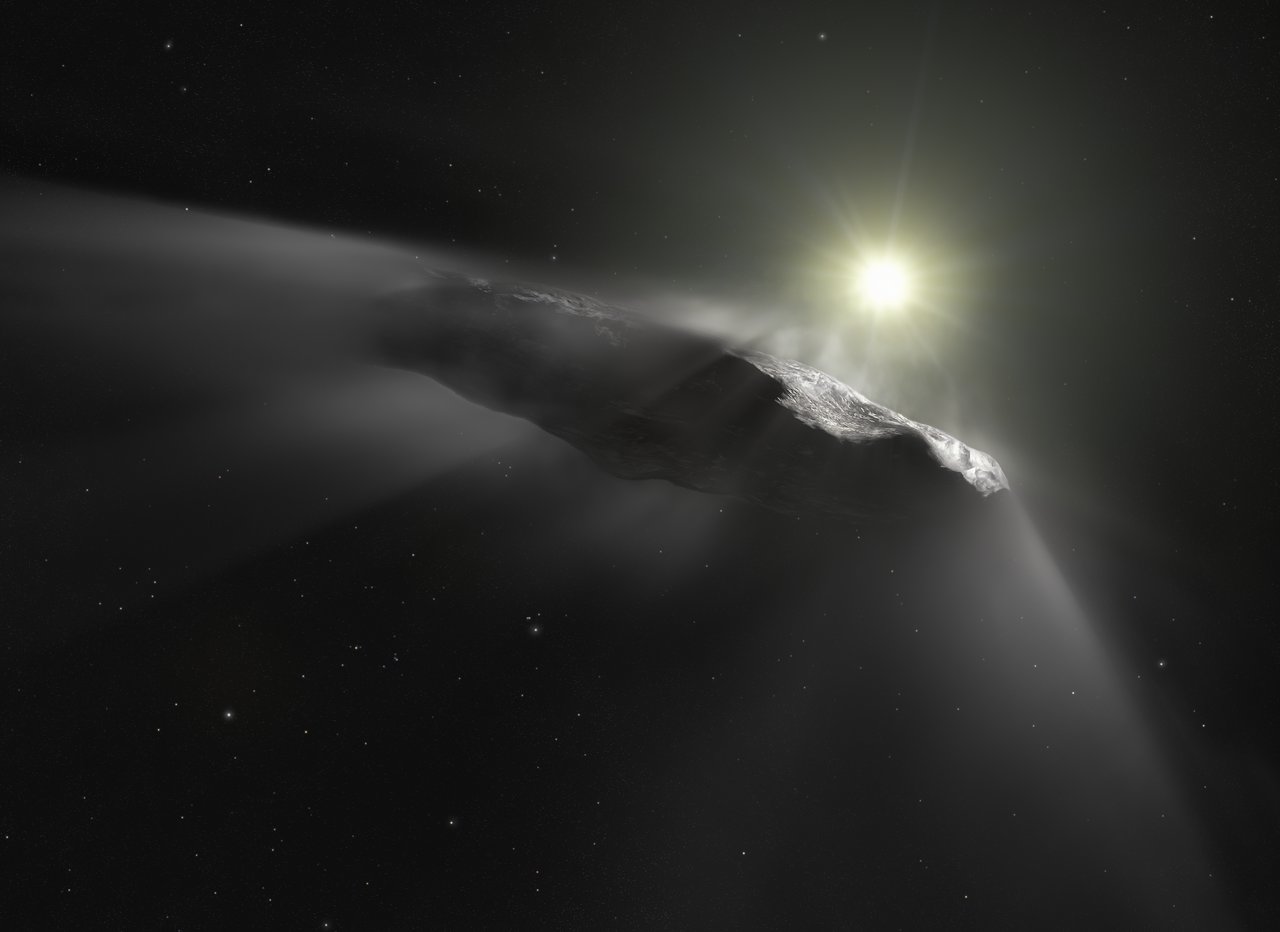Comments?????
Email the Webmaster!!!!!

PAGE Table of Contents
- Return to Domain Directory Page
- Return to Domain Main page
- Return to Missions page
- Mission to the Solar system's largest Moons
- Introduction to the solar system
- Speculations
- Solar System Infographics
- Our Solar System
- Navigating the Solar System
- OUR SUN
- The Terrestrial Planets
- Our Asteroid Belt
- The Solar System's Gas Giants
- The Solar System's Ice Giants
- Some Ocean Worlds of our solar system
- Dwarf Planets
- The Kuiper Belt
- The Oort Cloud
- Some Space Settlements proposals
- Future Missions to the Solar System
- Asteroid? Spaceship? Comet? OUMUAMUA
- Jump To the Articles subsection
- Click here to go to the bottom of this page
Inroduction to the solar system
Status of the Deep Space Network
About the Deep Space Network: Space Communications and Navigation
Information on About the Deep Space Network: Space Communications and Navigation
NASA's Digital Orrery
MAST: Barbara A. Mikulski Archive for Space Telescopes
Map of the Universe from Johns Hopkins University and others.....
Johns Hopkins University (JHU) continues to pad its space community résumé with their interactive map, “The map of the observable Universe”, that takes viewers on a 13.7-billion-year-old tour of the cosmos from the present to the moments after the Big Bang. While JHU is responsible for creating the site, additional contributions were made by NASA, the European Space Agency, the National Science Foundation, and the Sloan Foundation.
JWST's weekly observing schedule:
NASA's Unverse of Learning
An Integrated AstroPhisics STEM Learning and Literacy program
The Solar Ham
Click here to return to top of page
Speculations
Nuclear Hybrid Rocket
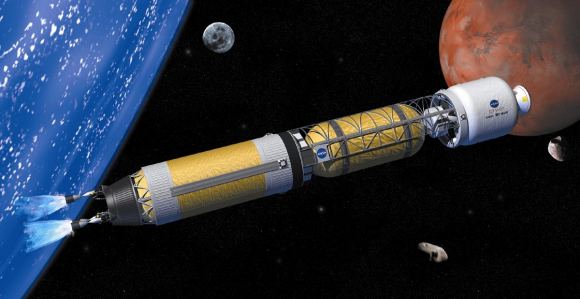
Artist’s concept of a bimodal nuclear rocket making the journey to the Moon, Mars, and other destinations in the Solar System. Credit: NASA
Stuart Talbott: Planet Formation Is Electromagnetic | Thunderbolts
We begin with a necessary acknowledgement—conventional theories of planet formation by gravitational processes have been falsified both observationally and experimentally. When experts attempt to re-create the planetary accretion disk theory with computer models it breaks down. Rather than growing, the incipient objects tend to splinter after reaching pebble size. How can this result in bodies the size of asteroids, let alone planets? In 2024, planets were discovered around Young Stellar Objects (YSO) which are determined to be only thousands of years old—not the millions of years as in the conventional gravitational theory—stimulating a new understanding how planets are born. Independent researcher Stuart Talbott explains how planet formation is caused by the effect of electromagnetism, specifically, the electromagnetic Z-pinch. ---- Ideas and/or concepts presented on this channel do not necessarily express or represent the Electric Universe Model of Cosmology, The Thunderbolts Project, or T-Bolts Group Inc. If you see a CC with this video, it means that subtitles are available. To find out which ones, click on the Gear Icon in the lower right area of the video box and click on “subtitles” in the drop-down box. Then click on the subtitle that you would like. The Thunderbolts Project — a Voice for the Electric Universe Become a Producer through the PATREON Rewards program... Subscribe to Thunderbolts eNewsletter Subscribe to Thunderbolts eNewsletter Guides to the Electric Universe Electric Universe Books & Merch Electric Universe by Wal Thornhill Thunderbolts Instgram Facebook / thunderboltsproject X @tboltsproject The Thunderbolts Project™ Trademark of T-Bolts Group Inc. a non-profit 501(c)(3) organization. Copyright © 2025 T-Bolts Group Inc. All rights reserved.
The Real Reasons for Space Colonization
Space colonization is happening, and we will see things like humans on Mars very soon. But why? What are the real reasons for space colonization, and what does it mean for you? If you enjoy, please like and subscribe Footage in this video made using Space Engine
Interstellar Objects Like Oumuamua are Entering the Solar System from Alpha Centauri Shows New Study
Join Territory to get access to perks: / @territoryspace Research paper: Recent research indicates that material from the Alpha Centauri (AC) star system has already reached our Solar System. The AC system, our nearest stellar neighbor, comprises three stars: Alpha Centauri A and B, which form a binary pair, and Proxima Centauri, a dim red dwarf. As this system moves toward us at approximately 22 kilometers per second (about 79,000 kilometers per hour), it presents a unique opportunity to study the transfer of material between star systems. The study estimates that there are potentially large quantities of material from AC within our Solar System. Specifically, the authors suggest that there could be around one million particles larger than 100 meters in diameter residing in our Oort Cloud. However, detecting these objects is challenging due to their vast distance from the Sun and their sparse distribution. While larger interstellar objects like 'Oumuamua and Comet Borisov have garnered significant attention, this research highlights the presence of smaller particles from AC. The study also found that some material from Alpha Centauri has already reached our Solar System, with most of it traveling for less than 10 million years. To survive the journey, these particles must be larger than about 10 microns. Researchers estimate that around 10 Alpha Centauri particles currently enter Earth's atmosphere as detectable meteors, a number expected to increase tenfold over the next 28,000 years. This discovery underscores the dynamic nature of our galaxy and the interconnectedness of stellar systems. Understanding how material is exchanged between star systems not only deepens our knowledge of interstellar transport but also opens new avenues for exploring the processes involved in planet formation. 0:00 Interstellar Visitors from Alpha Centauri 4:55 Project Breathrough Starshot Subscribe to take a deep dive into the unknown with Territory - / @territoryspace Instagram - / @territoryspace
Magnetoplasmadynamic Thrusters and Magnetoshell Shields.
This is the superconducting applications section of the last video by itself as requested. Have a great week! Shop the Academy store at... Please help support our channel at.Patreon Get 20% off when you sign up for Brilliant.org Thank you so much for watching! Ad Astra Pro Terra Twitter accounts Artists Bassd Neopork85 Hazegrayart AlexSVanArt Fragomatik nickhenning3d Rovaerialphotos Companies NASA SPACEX Cochranex Blue Origin Space Ryde Virgin Galactic Relativity Space NeutronStarsys
Planning Your Solar System Road Trip
Want to visit the moon? Want to climb Olympus Mons on Mars? Work on you tan on Mercury? Chill out on Titan? To do this, you'll need to get there, and for that, you'll need to understand Delta V. This video explains delta V and the rocket equation and how hard it is to get from here to there.
Is This the Scariest Sound in Space?
#spacesounds #astrum #astronomy The universe is far from silent. An eerie symphony echoes through the cosmos, lurking in the depths of space. Prepare for a spine-chilling journey through the haunting sounds of black holes, comets, and the mysterious rings of Saturn. ▀▀▀▀▀▀ 0:00 The Scariest Sounds in Space 2:32 The Sound of Saturn’s Rings 6:09 The Sound of a Comet 8:43 The Sound of a Supermassive Black Hole 12:36 The Sound of Black Holes Colliding ▀▀▀▀▀▀ Astrum Podcast: Displate Posters: Astrum Merch! Join the official Astrum discord server: Metal Posters: ----------------------------------------------------------------------------------- SUBSCRIBE for more videos about our other planets. Subscribe! Facebook! Twitter! -------------------------------------------------------------------------------- A huge thanks to our Patreons who help make these videos possible. Sign-up here: Patreon: --------------------------------------------------------------------- Astrum Spanish: Astrum Portuguese:/ @astrumbras
Click here to return to top of page
Our Solar System A 3D adventure through our cosmic neighborhood with NASA
Information on Our Solar System
A 3D adventure through our cosmic neighborhood with NASA
A 3D adventure through our cosmic neighborhood with NASA
How Solar System Moves Explained in Easy Words
In this video, we're going to learn how the solar system moves explained in easy words. We'll start with the sun and work our way around the planets. By the end, you'll have a good understanding of how the solar system moves! If you're interested in learning more about how the solar system moves, then this video is for you! By the end of this short video, you'll have a good understanding of how the solar system moves and how it works. If you're looking to learn something new, then this video is a great way to start! Animation is created by Bright Side. Music by Epidemic Sound Our Social Media: Facebook: . Stock materials (photos, footages and other): Shutter Stock East news For more videos and articles visit:
The Most Strange And Terrifying Planets in our Solar Systemx
#jupiter #universe #space Space has always captured humanity's collective imagination. Among the pantheon of celestial bodies that have fascinated us, Jupiter stands out as the largest planet in our solar system, its vibrant stripes and prominent 'Great Red Spot' making it easily recognizable. #jupiter #universe #space
Why the Solar System May Be Full of Life with NASA Chief Scientist Dr. James Green
Is life on Europa? Did Mars have life? Does Mars currently have life on it? NASA Chief Scientist Dr. Jim Green joins John Michael Godier to discuss NASA's plans for Mars 2020, the possibility of past and current life on Mars. As well as the fact that the solar system may be full of life as much of the moon's and Kuiper belt objects have large amounts of water on them. Does Europa have complex life? It has an ocean of water underneath it's surface more than the combined amount of water on Earth. The Europa Clipper mission will do its best to answer that. Also, how is NASA now searching for potential technosignatures? Dr. Green's podcast Gravity Assist: Want to support the channel? Patreon: Follow us at other places! Website: Twitter: @jmgeventhorizon Instagram: @jmgeventhorizon Music featured on Event Horizon Stellardrome badcamp Miquel Johnson Bandcamp Leerosevere Bandcamp Aeriumambient Bandcamp FOOTAGE: NASA ESA/Hubble ESO - M.Kornmesser ESO - L.Calcada ESO - Jose Francisco Salgado (josefrancisco.org) NAOJ University of Warwick Goddard Visualization Studio Langley Research Center Pixabay
NASA Scientist Simulates Kaleidoscope of Sunsets on Other Worlds
Geronimo Villanueva, a NASA planetary scientist, created these sunset simulations while building a computer modeling tool for a possible future mission to Uranus, an icy-cold planet in the outer solar system. To check the accuracy of his tool, Villanueva simulated known sky colors of various planets and moons, some of which are shown in this video. The simulations show these worlds turning away from the light of the Sun, which is what’s happening when we see a sunset. As these worlds rotate, photons get scattered in different directions depending on the energy of the photons and the types of molecules in the atmospheres. The result is a lovely palette of colors that would be visible to those standing on these worlds. For more information on the sunset simulations, go here: Video credit: NASA's Goddard Space Flight Center James Tralie (ADNET): Lead Producer Lead Editor Geronimo Villanueva (Catholic University of America): Lead Scientist Lead Visualizer Lonnie Shekhtman (ADNET): Lead Writer Aaron E. Lepsch (ADNET): Technical Support Music credits: "Immense and Beautiful" by Victoria Beits from Universal Production Music This video is public domain and along with other supporting visualizations can be downloaded from NASA Goddard's Scientific Visualization Studio at: https://svs.gsfc.nasa.gov/13645 If you liked this video, subscribe to the NASA Goddard YouTube channel: subscribe to the NASA Goddard YouTube channel: Follow NASA’s Goddard Space Flight Center · Instagram · Twitter- NASA GODDARD · Twitter-NASA GODDARD PICS · Facebook: · Flickr
A Brilliant Animation Showing How Fast and at What Angle the
Largest Planets in Our Solar System Rotate
by Lori Dorn at 1:25 PM on December 31, 2018
NASA's Solar System Page
NASA's Solar System Page
Radio signals converted to sounds from the solar system!!!
Solar System Guide
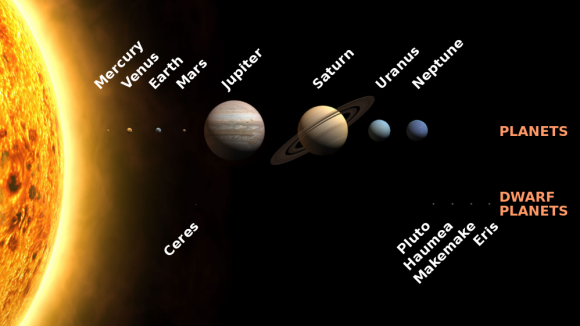
The Solar System. Image Credit: NASA
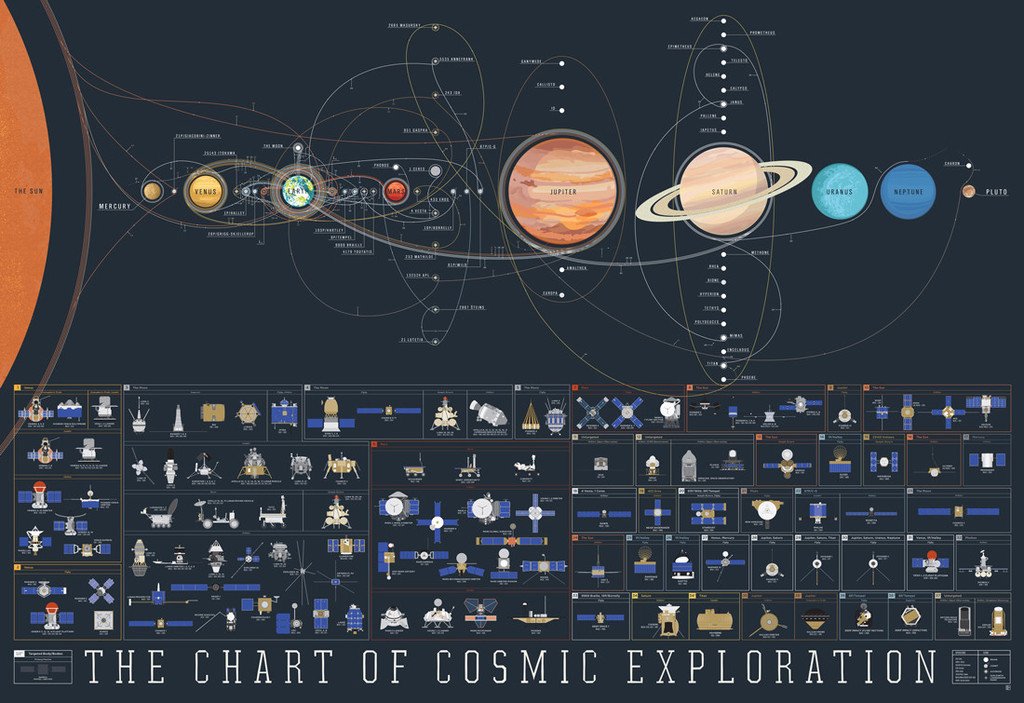
Get ready for an intergalactic (ok, maybe intragalactic) adventure! Pop Chart Lab has distilled more than half a century of space travel into a beautiful print. The Chart of Cosmic Exploration features hand-illustrated renderings of every orbiter, lander, rover, flyby, and impactor to ever successfully slip the surly bonds of Earth's orbit. Plus all of our pretty-cool planets in our pretty-great Solar System. Details - Dimensions: 36 x 24 inches (60.96 x 91.44 cm) - Each poster comes packaged in a Pop Chart Lab Test Tube - 100 lb. archival stock certified by The Forest Stewardship Council - Poster is pressed in Long Island City with vegetable-based inks About Pop Chart Lab In 2010, a book editor and a graphic designer joined forces with one modest goal: to render all of human experience in chart form. They went on to amass no small renown (that is, a ton of renown) for their infographical treatments of the varieties of beer, the full array of culinary tools, a taxonomy of hip-hop, and dozens more mappings of cultural touchstones. Now, with a small team of researchers, designers, and soldiers, Pop Chart Lab continues to assemble, sift, cull, and arrange massive amounts of cultural data into meaningful works of art and information.
The Major Planets of Our Solar System
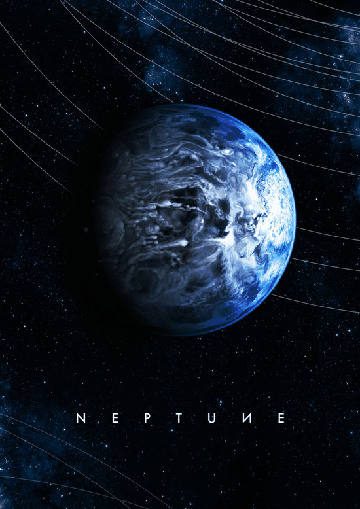
Real Images from the Solar System!
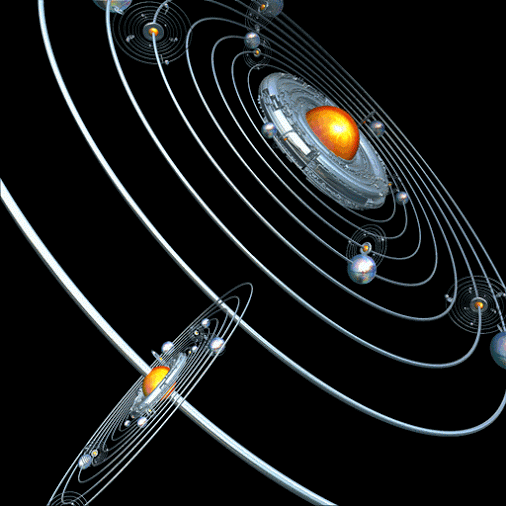
The Solar System to scale
Click Here
The Solar System Digest!
Click Here The Solar System Digest!
Cool action Solar System Action
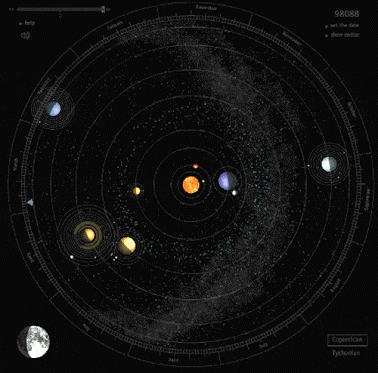
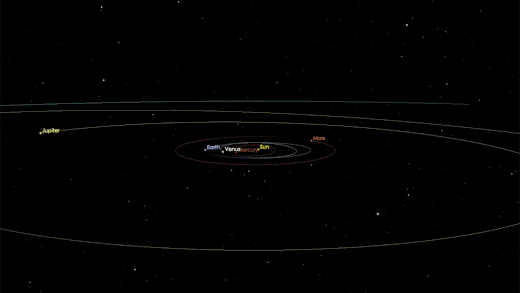
Planetary orbits in the Fourth Dimension
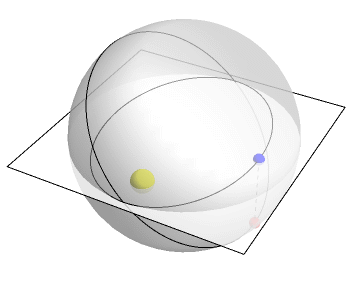
You probably that planets go around the sun in elliptical orbits. But do you know why?
In fact, they’re moving in circles in 4 dimensions. But when these circles are projected down to 3-dimenisons
…
Solar system diagrams from Table Whale.com! amazing!
The Website of the Planetary Space Institute
The Planetary Science Institute
Click here to return to top of page
Our Solar System
NASA Space Sounds
Uploaded on Feb 10, 2010 NASA Space Sounds - Information about the recordings and sample sounds of the planets,
moons and rings of planets in our Solar System.
[Note: both Song of Earth and Voice of Earth are man made compositions of the original Earth recordings.]
, see:"For live 24hr sound from space Category Science & Technology License Standard YouTube License
Information on Radio Astronomy net
NASA's Solar System Page
NASA's Solar System Page

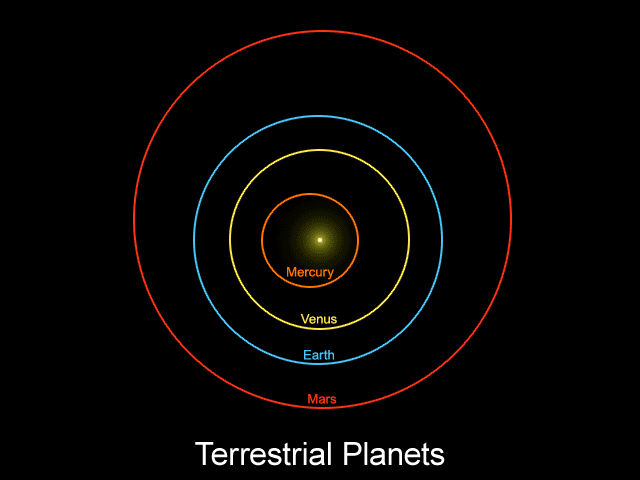
Animated diagram showing the spacing of the Solar Systems planet’s, the unusually closely spaced orbits of six of the most distant KBOs, and the possible “Planet 9”. Credit: Caltech/nagualdesign
The Lsst main page
Published on May 2, 2017 Fly over the summit of Cerro Pachón in Chile with us and see how quickly LSST is becoming a reality! This video documents the progress of construction so far, dramatically capturing the scale and complexity of the ongoing project. A multimedia team was contracted to document the project via drone film footage, time-lapse sequences, panorama images, and full dome clips. This LSST blog post describes the details of the film crew's March 2017 visit to the construction site: Music licensed from Extreme Music Use policy Category Science & Technology License Standard YouTube License
x2+ Hours Of Exploring Our Fascinating Universe | Full Series | BBC Earth Lab
#Explorers #WorldSpaceWeek Is our solar system shaped like a croissant? Is there really alien life on Venus? Discover the extraordinary explorers that are journeying through our cosmos on a quest to uncover the unknown... Best of Earth Lab: Best of BBC Earth: #WorldSpaceWeek #Explorers This is a channel from BBC Studios who help fund new BBC programmes. Service information and feedback: 00:00:00 Incredible Discoveries Of The James Webb Space Telescope 00:09:22 Pluto's Dark Side Revealed 00:17:07 Sending A Probe Around The Sun 00:26:39 The Mysterious World Of Jupiter 00:34:00 Flying A Drone On Saturn's Moon Titan 00:40:50 Is Our Solar System Shaped Like A Croissant? 00:51:01 Searching For Life On Jupiter's Moon, Europa 00:58:16 Jupiter's Moon Io Shoots Lava 300 Miles Into Space 01:05:12 Icy Moon Enceladus Rains Water On Saturn 01:13:19 Is There Alien Life On Venus? 01:20:07 Finding A Liquid Ocean In Space 01:27:08 Exploring Gigantic Lake Beds On Mars 01:34:48 How Hubble Nearly Destroyed NASA's Reputation 01:45:00 Artemis Mission: The Next Giant Leap For Mankind 01:53:24 How (NOT) To Land A Spacecraft On A Comet : Best of Earth Lab Best of BBC Earth: This is a channel from BBC Studios who help fund new BBC programmes. Service information and feedback:
Navigating the Solar System
NASA IS PLANNING TO TEST PULSARS AS COSMIC NAVIGATION BEACONS
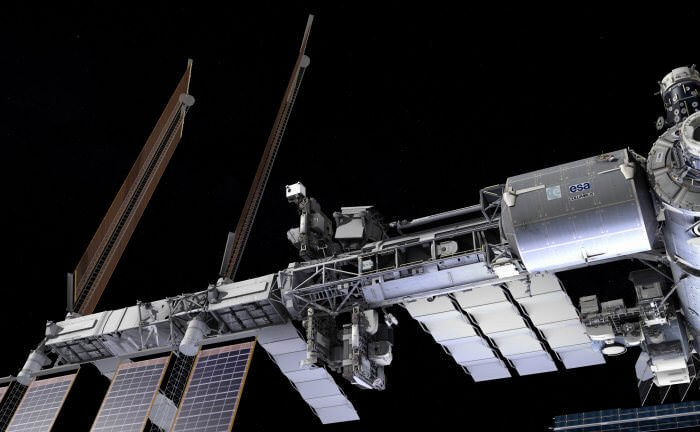
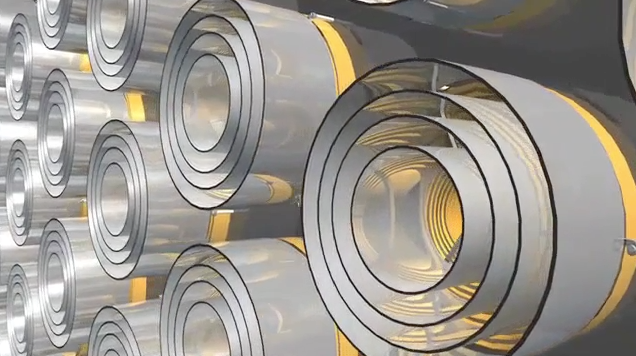
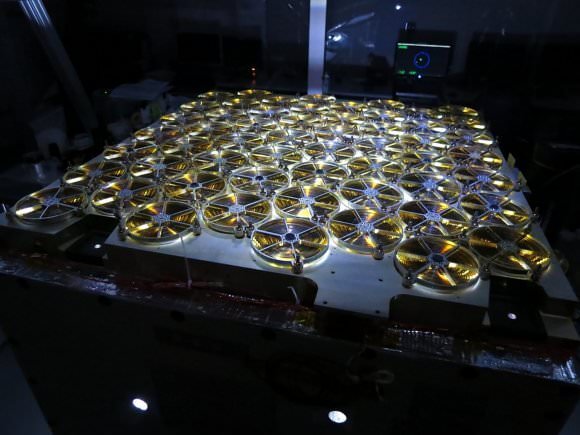
Unlocking Secrets of Neutron Stars with NICER
The IAU has revamped their solar system coordinate system.
Now, if you are not planning on a driving vacation on Mercury, this might be a dry bit of information
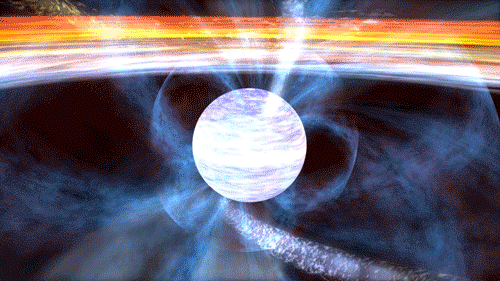
Engineers are considering X-ray navigation - similar to GPS in space - for future CubeSat missions to the Moon and human exploration spacecraft. Why X-ray? Find out here:
Click here to return to top of page
OUR SUN
Link to My Mission to Sun Page
Our one and only SUN
The Solar Ham
From Space-facts.com OUR SUN
From Wikipedia.org our sun
Click here to return to top of page
The Terrestrial Planets
MY Mission to MERCURY Page
MY Mission to VENUS Page
MY Mission to EARTH Page
MY Mission to Moon Page
MY Mission to Mars Page
The Terrestrial Planets from Wikipedia.org
Facts on Mercury from Space-facts.com
Facts on Venus from Space-facts.com
Facts on Earth from Space-facts.com
Facts on Earth's Moon from Space-facts.com
The earth Venus orbital symmetery

as seen in the solar system (by no ridiculous coincidence), Earth orbits the Sun 8 times in the same period that Venus orbits the Sun 13 times!
Drawing a line between Earth & Venus every week results in a spectacular FIVE side symmetry!!
Lets bring up those Fibonacci numbers again: 1, 1, 2, 3, 5, 8, 13, 21, 34.. So if we imagine planets with Fibonacci orbits, do they
create Fibonacci symmetries?! You bet!!
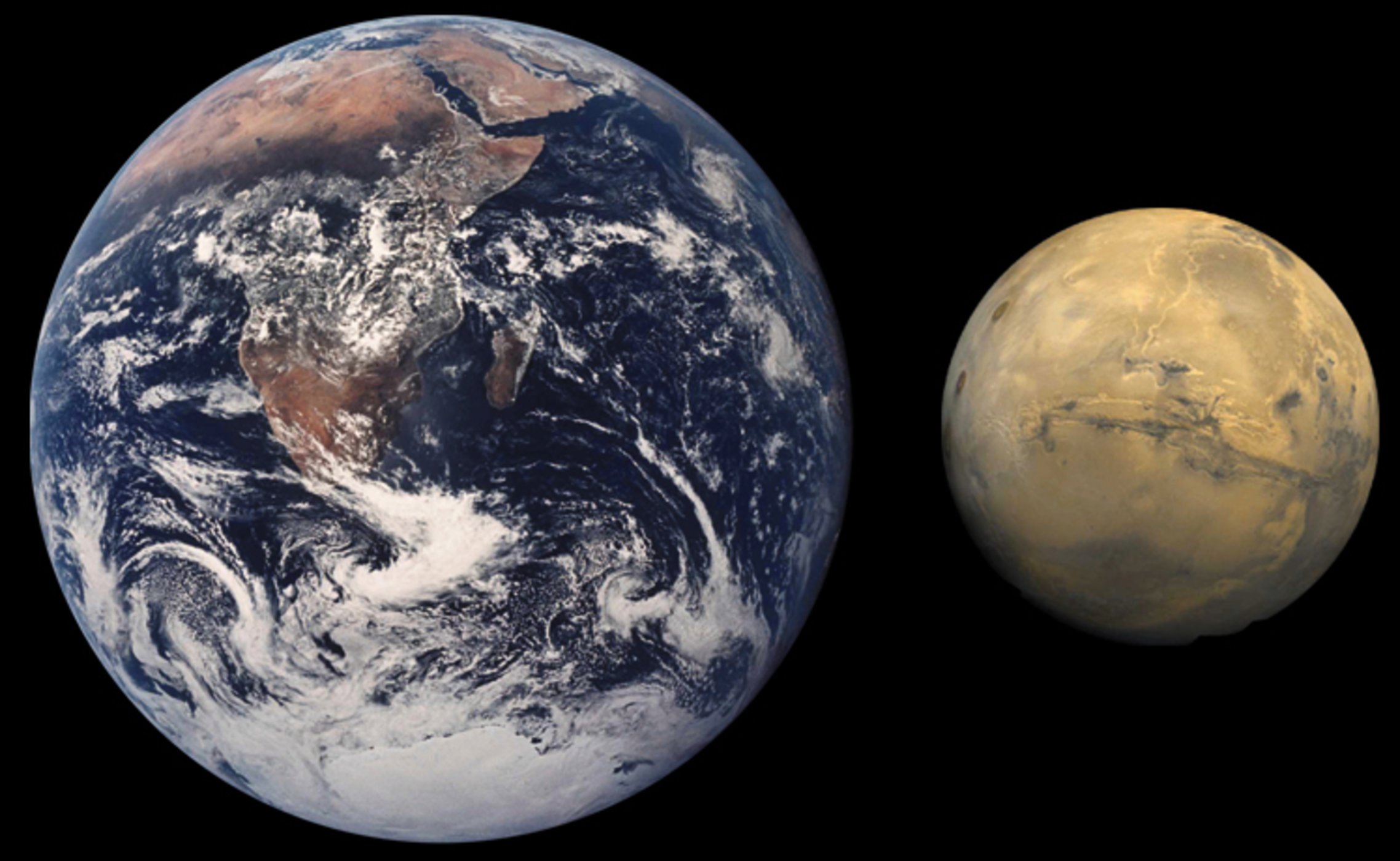
Size comparison between Earth and Mars. Credit: NASA
Click here to return to top of page
Asteroid Belt
My Mission To The Asteroids page
Facts on the Asteroid Belt from Space-facts.com
From Universetoday.com: What is the Asteroid Belt?
From Space-Facts.com Ceres
FRom Universetoday.com Ceres
From Universetoday.com Vesta
Click here to return to top of page
The Solar System's Gas Giants
My Mission to Jupiter Page
My Mission to Saturn page
Wikipedia article on the gas giants
Article on the gas giants from Universetoday.com
Article on the Gas Giants from Space-facts.com
Article on Jupiter from Space-facts.com
Article on Saturn from Space-facts.com
MARS’ GROWTH STUNTED BY AN EARLY GIANT PLANET INSTABILITY(PDF)
This video of the Nice Model shows how the orbits of the outer gaseous planets of our solar system might have evolved. It also explains why and how the late heavy bombardement might have taken place. Note that in the first model shown in the film, Neptune's orbit is smaller than Uranus's orbit to begin with. The film is slowed down in places to make the changes more obvious for the viewer. Credit: Hal Levison, Southwest Research Institute, Boulder, Colorado Customized for Sky and Telescope by Shweta Krishnan
Early Giant Planet Instability
Here is a video of a successful simulation from Clement et al. (2018)(PDF) The x axis shows the semi-major axis of the planets (distance from the sun). The y axis shows the orbital eccentricity (the degree to which the orbit is elliptical or non-circular). The size of each dot is proportional to the mass of the object in the simulation, and the color is related to the amount of water and volatiles the object contains. The 5 black dots represent the giant planets (Jupiter, Saturn, Uranus, Neptune and an additional primordial Ice Giant which is ejected. The terrestrial planets form from a disk of 1100 initial objects. The objects exterior to the giant planets are the primordial Kuiper Belt bodies. When the instability ensues, the extra ice giant is ejected, and the outer section of the terrestrial disk is greatly depleted. This limits the mass of the Asteroid Belt, and prevents a planet from forming in the belt. Furthermore, Mars stops accreting other large embryos after the instability, however Earth and Venus continue to grow. This is consistent with the geological ages of Earth and Mars inferred from isotopic dating (Mars is thought to have finished forming within 1-10 million years, which Earth is believed to have taken around 100 million years to fully form). For more info please visit my website!
THE GIANT PLANETS IN THE SOLAR SYSTEM STUNTED THE GROWTH OF MARS
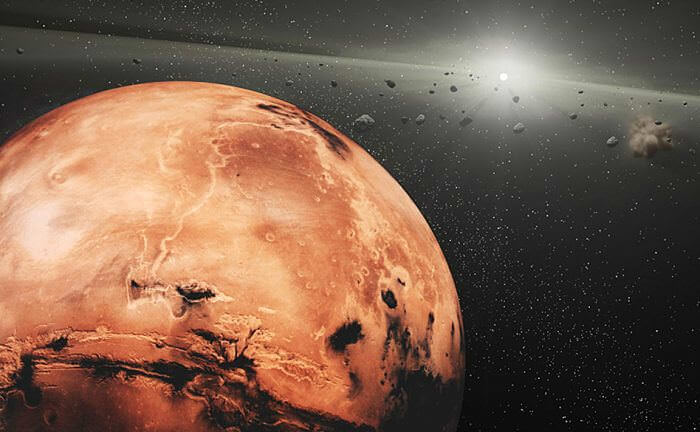
A new study led by researchers from OU indicates that the outer planets could be why Mars is significantly smaller than Earth. Credit: NASA
Click here to return to top of page
Some worlds In our Solar system WITH PRESUMED UNDERGROUND OCEANS

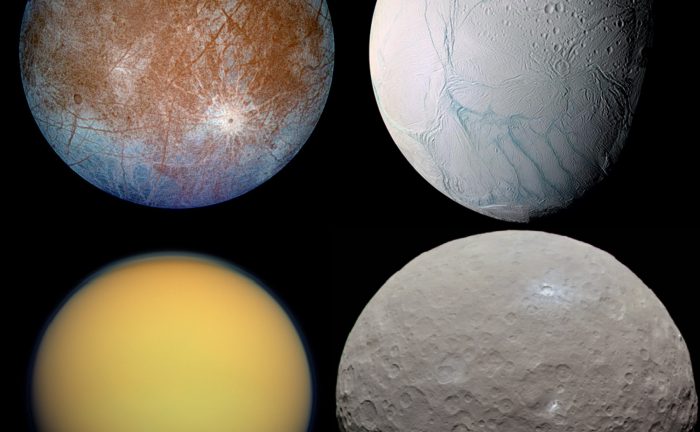
A montage of some of the "ocean worlds" in our Solar System. From top to bottom, left to right, these include Europa, Enceladus, TItan and Ceres. Credit: NASA/JPL
Is extraterrestrial life suppressed on subsurface ocean worlds due to the paucity of
bioessential elements? (PDF)
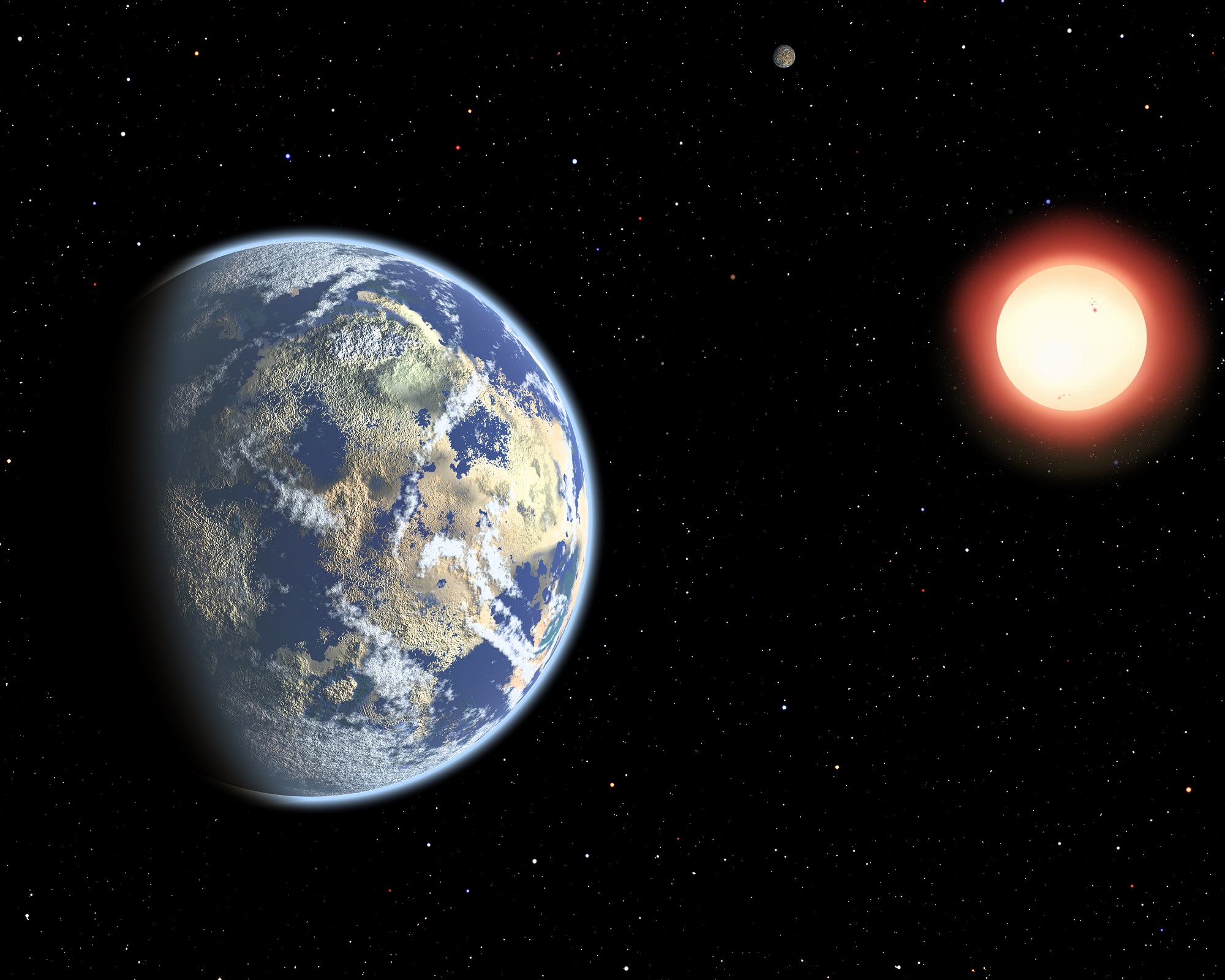
Artist’s depiction of a watery exoplanet orbiting a distant red dwarf star. Credit: CfA
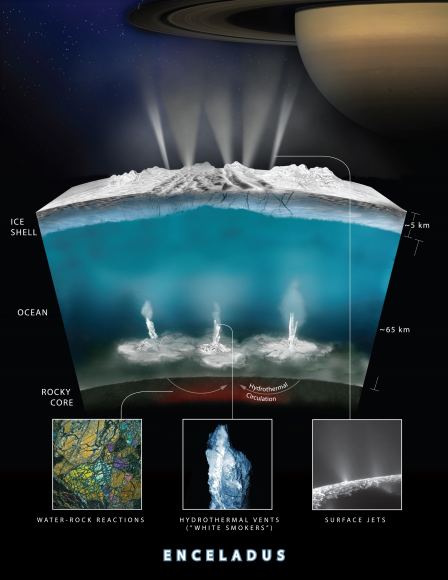
Artist rendering showing an interior cross-section of the crust of Enceladus, which shows how hydrothermal activity may be causing the plumes of water at the moon’s surface. Credits: NASA-GSFC/SVS, NASA/JPL-Caltech/Southwest Research Institute

Artist’s rendering of possible hydrothermal activity that may be taking place on and under the seafloor of Enceladus. Credit: NASA/JPL
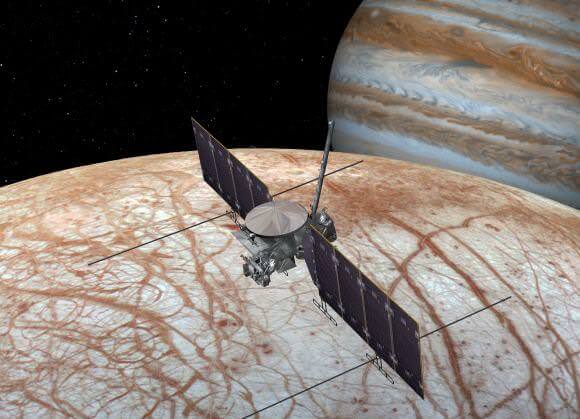
Artist’s concept of a Europa Clipper mission. Credit: NASA/JPL
Click here to return to top of page
The Ice Giants
My Mission To URANUS Page
My Mission To Neptune Page
Nasa's new pictures of Uranus' & Neptune's winds
Wikipedia Article on the Ice Giants
Planetary.org article on the Ice Giants
From Universe today The Ice Giants
From Spacefacts.com The Ice Giant Uranus
From Space Facts.com The Ice Giant Neptune
Oh, the Irony. There are Likely Water Worlds Everywhere, but They’re Covered in ice and Impossible to Investigate

Liquid water was originally thought to be relatively rare in the solar system. But one of the most important discoveries of the last several decades of planetary science is that liquid water is extremely common, even outside of the orbit of a star that would allow for it on the surface of a planet or moon. It just happens to be covered by a sheet of ice. Scientists at the Southwest Research Institute (SwRI) have now theorized about what the abundance of liquid water means for life throughout the galaxy, and whether it might be more common than originally thought.
Thanks to the soutwest institute
From Wikipedia the southwest institute

IWOWs are even prevalent in our own backyard. This cutaway image of Pluto shows a section through the area of Sputnik Planitia, with dark blue representing a subsurface ocean and light blue for the frozen crust. Artwork by Pam Engebretson, courtesy of UC Santa Cruz.
Searching for Life on Europa? Going Under the Ice
We’re now learning that icy worlds seem to be the best places in Solar System where life could be hiding. Worlds like Europa and Enceladus, which have vast oceans of liquid water beneath a shell of water ice. And just in the last year, astrobiologists announced that hardy forms of Earth life should be able to thrive in these oceans, feeding off hydrogen gas emanating from deep sea vents. Clearly we need to explore these worlds, to go deep down beneath the ice to explore the ocean depths. But how do you drill through kilometers of ice to reach it? Sign up to my weekly email newsletter: Support us at:Support us at: Follow us on Tumblr: More stories at Follow us on Twitter: @universetoday Like us on Facebook: Instagram - Team: Fraser Cain - @fcain/ Karla Thompson - @karlaii / Chad Weber - Chloe Cain - Instagram: @chloegwen2001 References: NASA REPORT ON EXPLORING EUROPA UNDER ICE (PDF)
Exploration under ice europa Applied Physics Lab Under water diver project Gladius Submersible Underwater Drone The most affordable, easy to use underwater photography drone w 4k camera, 100m depth & 500m range. The Leonard lab Department of Mechanical and Aerospace Engineeri uploaded by Muhammad Yasar Javaid
Click here to return to top of page
The Solar System's Dwarf Planets
My Mission To Pluto subpage our most complex Dwarf planet system

The Lords of the Rings among centaurs
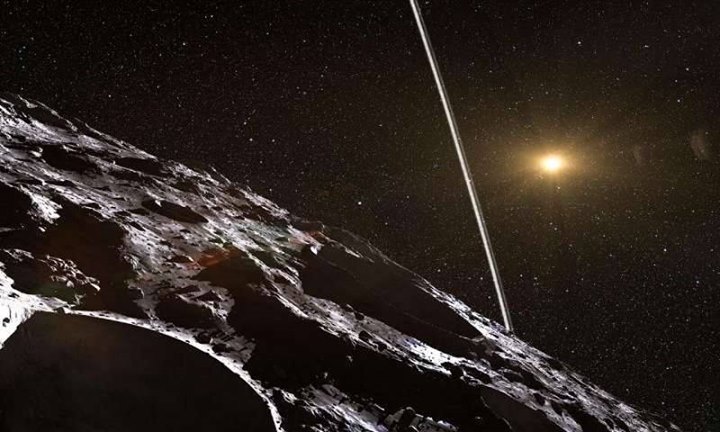
Chariklo, the largest known centaur object, orbiting in a region between Saturn and Uranus,
is a very intriguing celestial body that surprised astronomers last year.
This remote minor planet has unveiled the existence of its rings during a stellar occultation,
when it passed in front of a star UCAC4 248-108672.
The discovery was surprising because it had been thought that rings could only be stable around much more massive bodies.
Having in mind Chariklo's relative small mass, the rings should disperse over a period of at most a few million years,
so the scientists conclude that either they are very young, or they are actively contained by shepherd moons with a
mass comparable to that of the rings. Image credit: ESO/L. Calçada/Nick Risinger "Read more
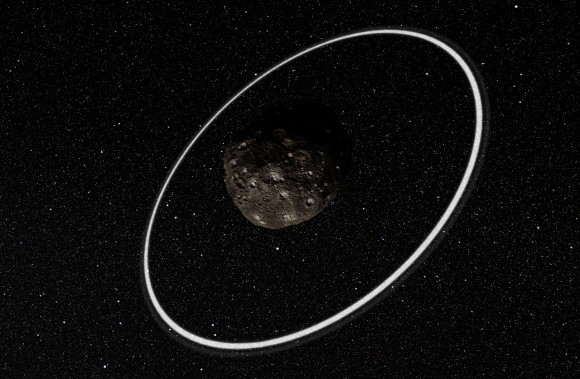
Artist’s impression of rings around the Centaur Chariklo, the first asteroid where rings were discovered.
Credit: ESO/L. Calçada/M. Kornmesser/Nick Risinger
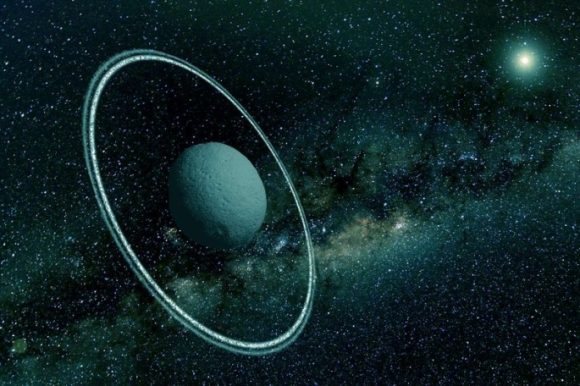
Artist’s impression of Chiron, showing a possible ring system. Credit:
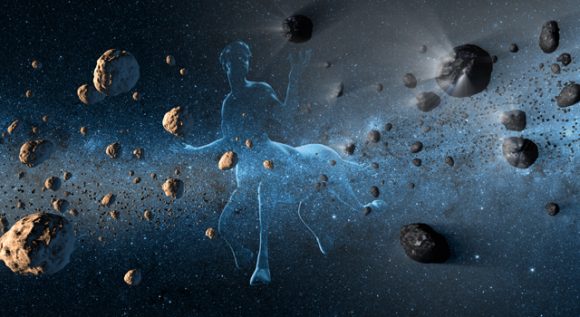
Due to their dual nature, the name Centaur has stuck when referring to objects that act as both comets and asteroids.
Credit: Further Reading:
List of possible dwarf planets
Click here to return to top of page
The Kupier Belt
Click here for the continuation of our soloar System The Trans Neptunian Objects
Planet 9 in the Kupier Belt??
Thank you NASA!!!!!
Nasa's Kuiper Belt page
NASA's Page on Things to know about the Kuiper Belt

Speculation
Colonizing the Kuiper Belt
Go to < to get a 30-day free trial of Brillant/A>+ the first 200 people will get 20% off their annual subscription. We often discuss our future in the Asteroid Belt, and the glorious civilizations we might one day build there. However, it is but a pale shadow of its larger twin, the Kuiper Belt, out at the edge of the solar system. : Visit our Website Join Nebula: Support us on Patreon: Support us on Subscribestar: Facebook Group: Reddit: Twitter:on Twitter and RT our future content. SFIA Discord Server: Listen or Download the audio of this episode from Soundcloud: Episode's Audio-only version: Episode's Narration-only version: Credits: Outward Bound: Colonizing the Kuiper Belt Episode 397, June 1, 2023 Produced, Written & Narrated by: Isaac Arthur Editors: David McFarlane Graphics by: Bryan Versteeg Jeremy Jozwik Ken York Kristijan Tavcar Sergio Botero Music Courtesy of: Epidemic Sound Markus Junnikkala, "Hail The Victorious Dead", "A Memory of Earth" Stellardrone, "Red Giant", "Ultra Deep Field" Sergey Cheremisinov, "Labyrinth", "Forgotten Stars" Taras Harkavyi, "Alpha and..."
Can We Colonize the Kuiper Belt? and the rest of the solar system
Our Merch Is Finally Available! 👉 / @insanecuriosity E-mail for Commercial Purposes ► Our New Website ► -- The trend now is to colonize Mars… But let’s go further than that, I’m getting bored of Mars Colonies. Imagine going far far beyond that. Imagine growing past the outside of our solar system. We start leaving behind familiar planets, familiar moons and you finally start entering a vast space filled with frozen treasures and cosmic wonders. Welcome to the Kuiper Belt in a celestial playground like no other! And not only that… imagine colonizing it.. What would life look like there? And would we able to survive it? What is Kuiper Belt Now what exactly is the Kuiper Belt, you ask? Imagine a giant, donut-shaped object orbiting the sun. Instead of houses, the vast area is filled with ice objects ranging from dust to asteroid. It’s like an ice cream parlor in the Milky Way with a variety of flavors to choose from! Why Colonize Kuiper? So why colonize Kuiper Belt and risk going that far… Well, the Kuiper Belt extends 30 times further from the Sun than Earth. Although initially unattractive for migrants due to the extreme distance and low light levels, it offers several advantages. Problems But the colonization doesn’t only bare advantages.. which if you think about them, are not that advantageous. Obviously, it comes with its sets of problems and challenges. The problems of inhabiting the Belt can be summarized in three main aspects Possibilities As for colonization outside the Kuiper Belt, including exoplanets and scattered disks, there are three options that do not rely on cheap fusion: First, classical nuclear fission using uranium and thorium in the solar system. -- "If You happen to see any content that is yours, and we didn't give credit in the right manner please let us know at Lorenzovareseaziendale@gmail.com and we will correct it immediately" "Some of our visual content is under an Attribution-ShareAlike license. in its different versions such as 1.0, 2.0, 3,0, and 4.0 – permitting commercial sharing with attribution given in each picture accordingly in the video." Credits: Ron Miller, Mark A. Garlick / MarkGarlick.com Credits: Nasa/Shutterstock/Storyblocks/Elon Musk/SpaceX/ESA/ESO/ Flickr -- 0:30 what is the kuiper belt 3:50 kuiper belt objects 5:07 problems 8:12 possibilities 9:38 conclusion 10:30 why colonizing the solar system will remain only a dream 14:00 Mercury 15:28 Venus 17:18 Moon 19:16 Mars 21:30 Ceres 23:23 Europa 24:48 Titan 26:35 Pluto
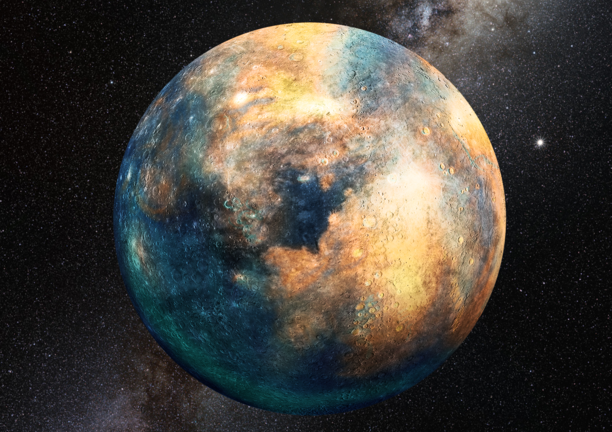
A planetary mass object the size of Mars would be sufficient to produce the observed perturbations in the distant Kuiper Belt. Credit: (Image: Heather Roper/LPL)
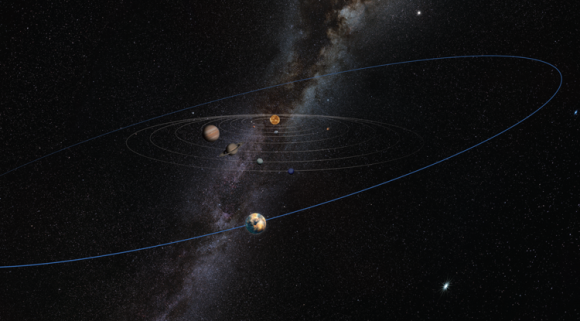
Artist’s impression of the yet-to-be-discovered “planetary mass object”, who’s existence has been theorized based on the orbital plane of distant Kuiper Belt objects. Credit: Heather Roper/LPL
The Kuiper Belt - Our Solar System
#space #solarsystem Hello viewers! do you know where Pluto is located? it is located in the Kuiper Belt. The Kuiper Belt, also known as the Kuiper-Edge worth Belt is a disk-shaped region found in the outer solar system, outside the orbit of Neptune. It extends from the orbit of Neptune at around 30 Astronomical Units (AU) out to around 50 AU from the Sun and contains hundreds of millions of small icy bodies that are thought to be leftover material from the formation of the outer planets. This is the place where Pluto was found and was reclassified to a dwarf planet due to being a member of this belt. We know you want to know more about this belt and hence we bring 10 interesting facts about the Kuiper belt. #KiuperBelt #solarsystem #space Subscribe to Explified for more such videos! References and citations: From Astronomy trek From NASA: 10 things to know about the Kuiper Belt .
Kuiper Belt: Realm of the Dwarf Planets
Simon's Social Media: Twitter: Instagram: #sponsored Check out Squarespace:for 10% off on your first purchase. Love content? Check out Simon's other YouTube Channels: Biographics: Geographics: Warographics: SideProjects: Into The Shadows: TopTenz: Today I Found Out: Highlight History: Business Blaze Casual Criminalist: Decoding the Unknown:
With Thanks to the Jaxa: The Japan Aerospace Exploration Agency
More Evidence that the Kuiper Belt is Bigger Than We Thought
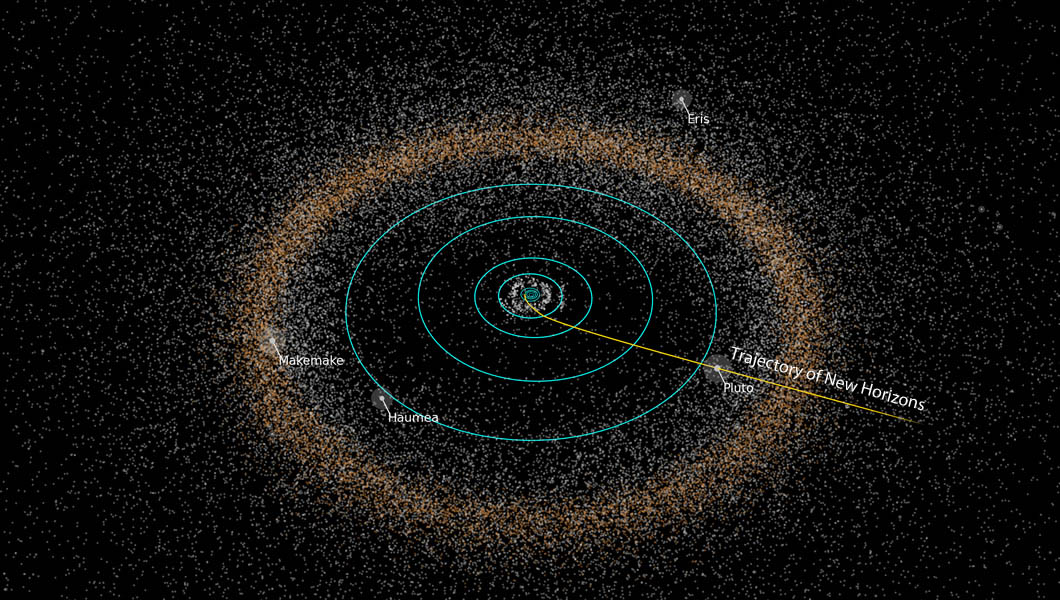
The Kuiper Belt was named in honor of Dutch-American astronomer Gerard Kuiper, who postulated a reservoir of icy bodies beyond Neptune. The first Kuiper Belt object was discovered in 1992. We now know of more than a thousand objects there, and it's estimated it's home to more than 100,000 asteroids and comets there over 62 miles (100 km) across. Credit: JHUAPL
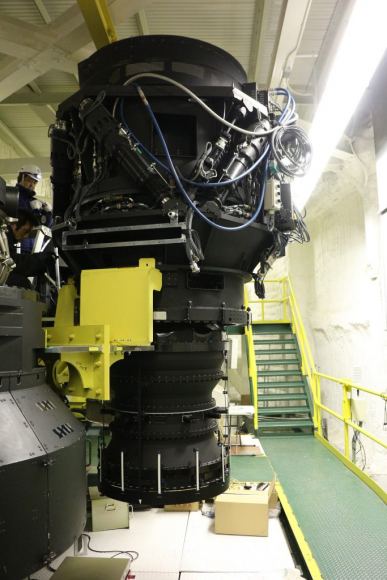
The Hyper Suprime-Cam at the Subaru Telescope in Hawai’i is part of the search for New Horizons flyby targets. It has a special filter to aid in the search. Credit: Subaru Telescope.
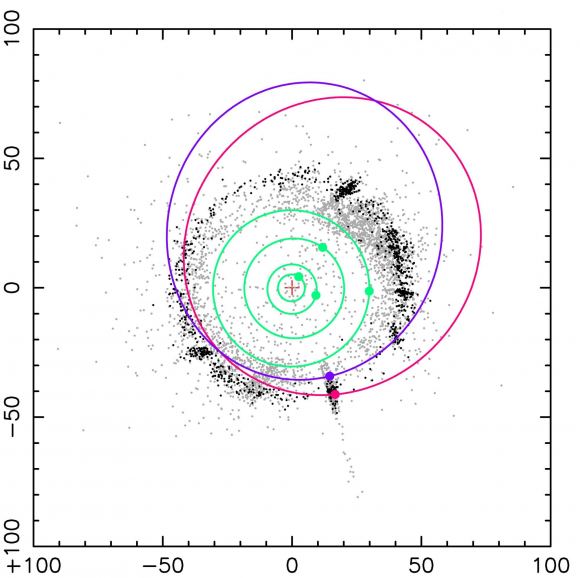
Schematic diagram showing the orbits of the two discovered objects (red: 2020 KJ60, purple: 2020 KK60). The plus symbol represents the Sun; green lines are the orbits of Jupiter, Saturn, Uranus, and Neptune. The numbers on the vertical and horizontal axes represent the distance from the Sun in astronomical units. (1 AU corresponds to the distance between the Sun and the Earth). The black dots represent classical Kuiper Belt objects. These are thought to be a group of icy planetesimals that formed early in Solar System history. The gray dots represent outer Solar System objects with a semi-major axis greater than 30 au. These include objects scattered by Neptune. They extend far out, and many have orbits inclined with respect to the ecliptic plane. The circles and dots in the figure represent their positions on June 1, 2024. Credit: JAXA
Click here to return to top of page
Click here to Jump to Associated pages from universetoday
Click here to return to top of page
The OOrt Cloud
Speculation
Outward Bound: Colonizing the Oort Cloud
Could the cold outer reaches of the solar system ever be called home? Visit our sponsor, Brilliant: Far beyond even Pluto and the Kuiper Belt is a vast and mostly empty region of space that we theorize may contain trillions of comets and other icy bodies. Frozen and barren though they would be, we will consider how they might one day become thriving and comfortable habitats for us. Visit our Website: Join the Facebook Group: Support the Channel on Patreon: : Visit the sub-reddit Listen or Download the audio of this episode from Soundcloud: Cover Art by Jakub Grygier: Graphics Team: Edward Nardella Jarred Eagley Justin Dixon Katie Byrne Kris Holland of Mafic Stufios: Misho Yordanov Pierre Demet Sergio Botero: Stefan Blandin Script Editing: Andy Popescu Connor Hogan Edward Nardella Eustratius Graham Gregory Leal Jefferson Eagley Keith Blockus Luca de Rosa Mark Warburton Michael Gusevsky Mitch Armstrong MolbOrg Naomi Kern Philip Baldock Sigmund Kopperud Tiffany Penner Music: Markus Junnikkala, "Hail the Victorious Dead" Koalips, "Kvazar" Lombus, "Hydrogen Sonata" Aerium, "Waters of Atlantis" Chris Zabriskie, "CGI Snake" Caption author (Korean) D Shin
What Is The Oort Cloud?
🌎 Get Our Merch designed with ❤ / @insanecuriosity 💫Get 10% off Under Lucky Stars and enjoy our star maps completely custom-made 💫 -- Looking at where we are now. With our back to the sun, and the Planets, Asteroids and comets behind us, we face Deep Space. There’s nothing between us and the stars that are very far away. Or is there? The Empty space beyond Neptune is not empty. What if we tell you that the Solar system is in the centre of a Giant ice-cloud! This cloud might be filled with billions and trillions of comets and other objects. What is the Oort Cloud? ------------------------------------------------------------------------------------------- Subscribe for more videos: E-Maol:Business Enquiries: ------------------------------------------------------------------------------------------- Before talking about this cloud, let’s talk about what are comets? Comets are cosmic snowballs of frozen gases, rocks and dust, orbiting the sun. They are typically the size of a town.These comets while orbiting the sun, get close to it and in the process are heated. Upon heating, they emit dust and gases into a giant glowing head. The dust and gases form a tail that stretches away from these for millions of miles. There are two main classes of comets : Short-period comets (also called elliptical comets) and long period comets. Short period comets are generally accepted to have emerged from either the Kuiper belt or the Scattered Disc which are two linked flat discs of icy debris beyond Neptune’s orbit at 30 au and jointly extending out beyond 100 au from the Sun. Short period comets have an orbital period of less than 200 years and orbit the Sun in the same plane as the planets. Long period comets have tilted and wildly elliptical orbits and appear from every direction in the sky. Their orbits last for thousands of years. The orbits of comets within the Kuiper belt are relatively stable, and so very few comets are thought to originate there. But there is a problem here. Comets loose material and burn up when they fly by the sun and melt in the spectacular process which creates those gorgeous tails. After an interval of time comets disappear, and yet new comets keep coming. It's been nearly 4.5 Billion years to our solar systems birth and yet these comets are still appearing from nowhere. So where are they coming from? And what makes them come toward us? This was a very puzzling question back in the mid- 20th century. It was first theorised and solved by Dutch Astronomer, Jan Oort in 1950. He was also the first person to find the evidence for dark matter. He also found the distance of our Solar System from the Centre of our Milky Way. To understand what he proposed, lets go a bit back in time, about 4.5 Billion years back. Lets Observe our solar system, coalescing out of a flat disk of material around the sun, the inner planets were warmer, smaller and rocky while the outer planets were in a region that was freezing and grew huge. As this part of the solar system was chillier, water came in the form of ice mixed with dust and other stuffs. These pieces would then collide and stick together, and in the process they grew bigger. So, after the planets formed, the region in which they were formed still contained lots of these leftover chunks of ice and stuff called Planetesimals. Planetesimals formed the same material as the planets did. But those outer Jovian planets, they had a lot of gravity and any piece of chunk that got too close to them, were either assimilated in them or got thrown into highly eccentric orbits. They were either thrown towards the sun or flung out into Deep Space. Trillions upon trillions of such ice balls got tossed around by the planets. These small chunks with a very little gravity pulled on the heavy planets and the planets did the same. Though, the gravitational pull of these small chunks of ice was not much, but after trillions of these encounters, it accounted. So, the overall effect of all these encounters was that the Saturn, Uranus and Neptune moved outwards and Jupiter moved Inwards. As Neptune was moving outwards, it had a lot of encounters with these ice chunks and flung them into wild elliptical and tilted orbits. This shuffling and moving of the outer planets is what caused the Late Heavy Bombardment in our solar system.Today, there are three distinct populations of these objects. One is a region called the Kuiper belt, named after the Dutch Astronomer Gerard Kuiper. Comets in this belt have a stable orbit aligned with the planets.
Planet 9 in the OORT CLOUD??
Nasa's OORT CLOUD PAGE
Nasa's OORT CLOUD PAGE
Wikipedia Article
From Universe today: What is the Oort Cloud?
Facts on the oort cloud from Space facts.com
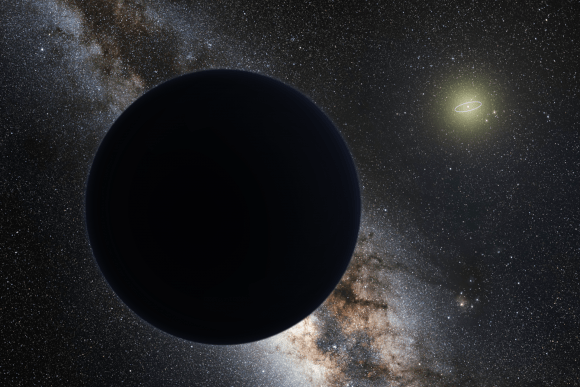
The supposed Planet 9 in he OORT cloud
Artist’s impression of Planet Nine, blocking out the Milky Way. The Sun is in the distance, with the orbit of Neptune shown as a ring. Credit: ESO/Tomruen/nagualdesign
Click here to return to top of page
Settlement proposals for the solar system
Published on Jun 5, 2014 VONA is a space settlement design that tied for Grand Prize in the 2014 NASA-NSS Space Settlement Design Contest. VONA was created by was created by a team of 6 students (grade 10): Aditya P. S., Amareen S., Hatinderpal Singh G., Hetarth C., Karan C., and Prajjwal M.; under the instruction of Mr. Emmanuel R. (Apeejay School), from Jalandhar, Punjab, India. Category Science & Technology License Standard YouTube License
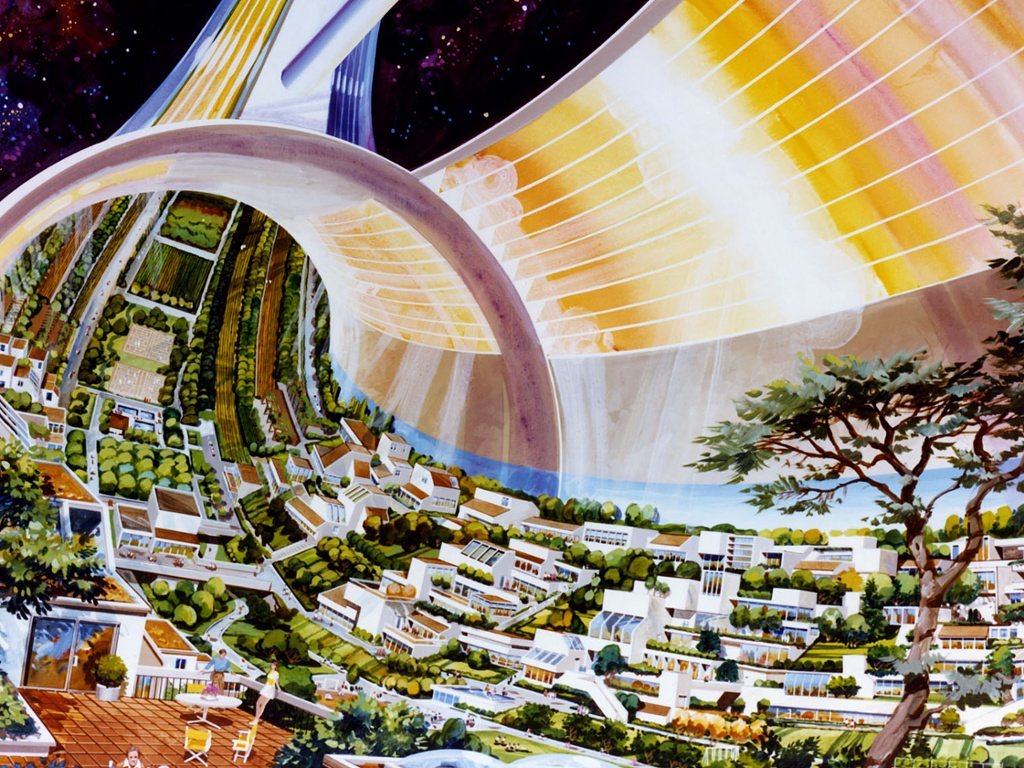
Forget the flying cars and robot maids, we’re just a few precious generations away from ditching this hunk
of space rock called Earth and living among the stars. The dream of off-world living is thanks, in large part,
to a single Princeton physics professor who not only envisioned a new path for humanity but nearly convinced Congress to
go along with it. Piers Biznoy explains just how close we came to building orbital habitats in the 1980s in his new book New Space Frontiers.
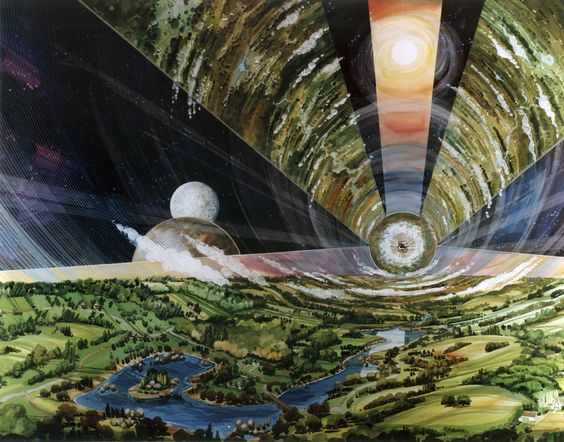
A look at O'Neill Cylinders, immense space habitats.
A look at O'Neill Cylinders, immense space habitats. Visit our sponsor, Brilliant: Far larger than any conventional Space Station, O'Neill Cylinders could potentially serve as as entire city-states or nature preserves. Today we will review how these megastructures might be built and how they may represent a superior option to terraforming planets. Visit our Website: Support us on Patreon: SFIA Merchandise available: Social Media: Facebook Group Reddit: Twitter:on Twitter and RT our future content. SFIA Discord Server: Listen or Download the audio of this episode from Soundcloud: Cover Art by Jakub Grygier: Writers: Isaac Arthur Script Editors: Darius Said Keith Blockus Konstantin Sokerin Mark Warburton Matthew Acker Michael Gusevsky MolbOrg Sigmund Kopperud Sam McNamara Producer Isaac Arthur Cover Artist Jakub Grygier Graphics Team Jarred Eagley Jeremy Jozwik Justin Dixon Katie Byrne Kris Holland (Mafic Studios) Sam McNamara (Rapid Thrash) Sergio Botero Narrator: Isaac Arthur Music Manager: Luca De Rosa - lucaderosa2@live.com Music: Markus Junnikkala, "We Roam the Stars" Kai Engel, "Endless Story About Sun and Moon" Brandon Liew, "Mystic Forest Orchestral Fantasy" Ayreon, "String Theory" Chris Zabriskie, "Stories About the World That Once Was" Markus Junnikkala, "A Memory Of Earth" Phase Shift, "Enigmatic." NJ Mandaville, "The Resting Vale" Dracovallis, "The Grave of My Beloved" Sergey Cheremisinov, "White Atlantis" Caption author (Portuguese) Misaki Chan Caption author (French) Sylvain Auclai
The O'Neill Cylinder Space Habitat: Islands In The Sky
What if humanity’s future isn’t on Earth—or even other planets—but in colossal artificial worlds built in space? In this episode, we explore the O’Neill Cylinder, a visionary space habitat that could house millions, serve as interstellar arks, and transform the cosmos into a network of orbital civilizations. Join us as we dive into the design, potential, and profound societal implications of these Islands in the Sky. Watch my exclusive video Post-Consciousness Civilizations: Get Nebula using my link for 40% off an annual subscription:Join Nebula: Get a Lifetime Membership to Nebula for only $300: Use the link to give a year of Nebula to a friend for just $30. Visit our Website: Join Nebula: Support us on Patreon: Support us on Subscribestar: Facebook Group: Reddit: on Twitter and RT our future content: SFIA Discord Server Credits: The O'Neill Cylinder Space Habitat: Islands In The Sky Episode 496; April 24, 2025 Written, Produced & Narrated by: Isaac Arthur Edited by: Briana Brownell Graphics: Anthrofuturism, Apogii.uk, Katie Byrne, Jarred Eagley, Jeremy Jozwik, Justin Dixon, Ken York YD Visual, Sergio Botero, Udo Schroeter Select imagery/video supplied by Getty Images Music Courtesy of Epidemic Sound http://epidemicsound.com/creator Markus Junnikkala, "A Fleet Behind the Moon" Phase Shift, "Forest Night" Kai Engel, "Endless Story About Sun and Moon" Chris Zabriskie, "Unfoldment, Revealment", "A New Day in a New Sector" Taras Harkavyi, "Alpha and..." Stellardrone, "Red Giant", "Billions and Billions"
Uploaded on Aug 15, 2009 Description: A one-minute/one-revolution fly-through of the Habitat.
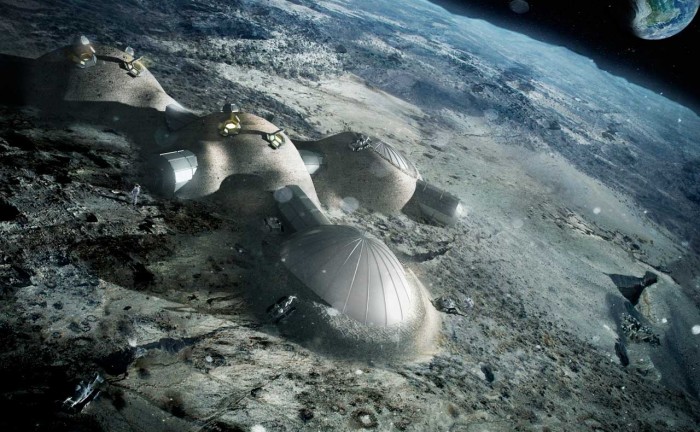
The ESA recently elaborated its plan to create a Moon base by the 2030s.
Credit: Foster + Partners is part of a consortium set up by the European Space Agency to explore
the possibilities of 3D printing to construct lunar habitations.
Credit: ESA/Foster + Partners
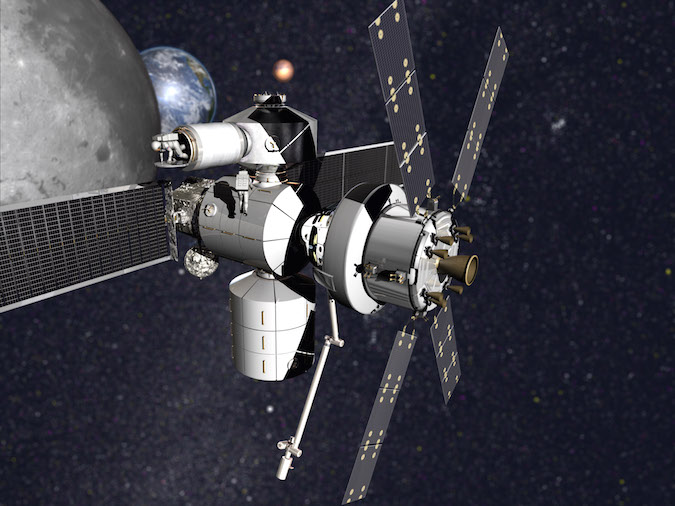
Artist’s concept of a Lockheed Martin-built habitation system with the Orion capsule.
Credit: Lockheed Martin NASA has selected six companies to work on designs for deep space habitat modules that could be used by
astronauts living and working near the moon as technology is developed for eventual flights to Mars, the agency announced Tuesday.(august 9, 2016)
NASA already is developing the Space Launch System heavy-lift booster and the Orion capsule that will carry crews to low-Earth orbit and beyond.
But Orion is far too small to support crews for long stays in so-called cislunar space or multi-year round-trip flights to and from Mars.
Kalpana One tour from Bryan Versteeg Studios Inc. on Vimeo. With a radius of 250m and a depth of 325m, Kalpana One would spin at a rate of 2 revolutions per minute to give the feeling of one earth gravity on the level where everyone will live. This means that people could live long and healthy lives while their bones and muscles would develop as they would on earth. This example layout of the settlement shows all of the luxuries and recreation of a small town.
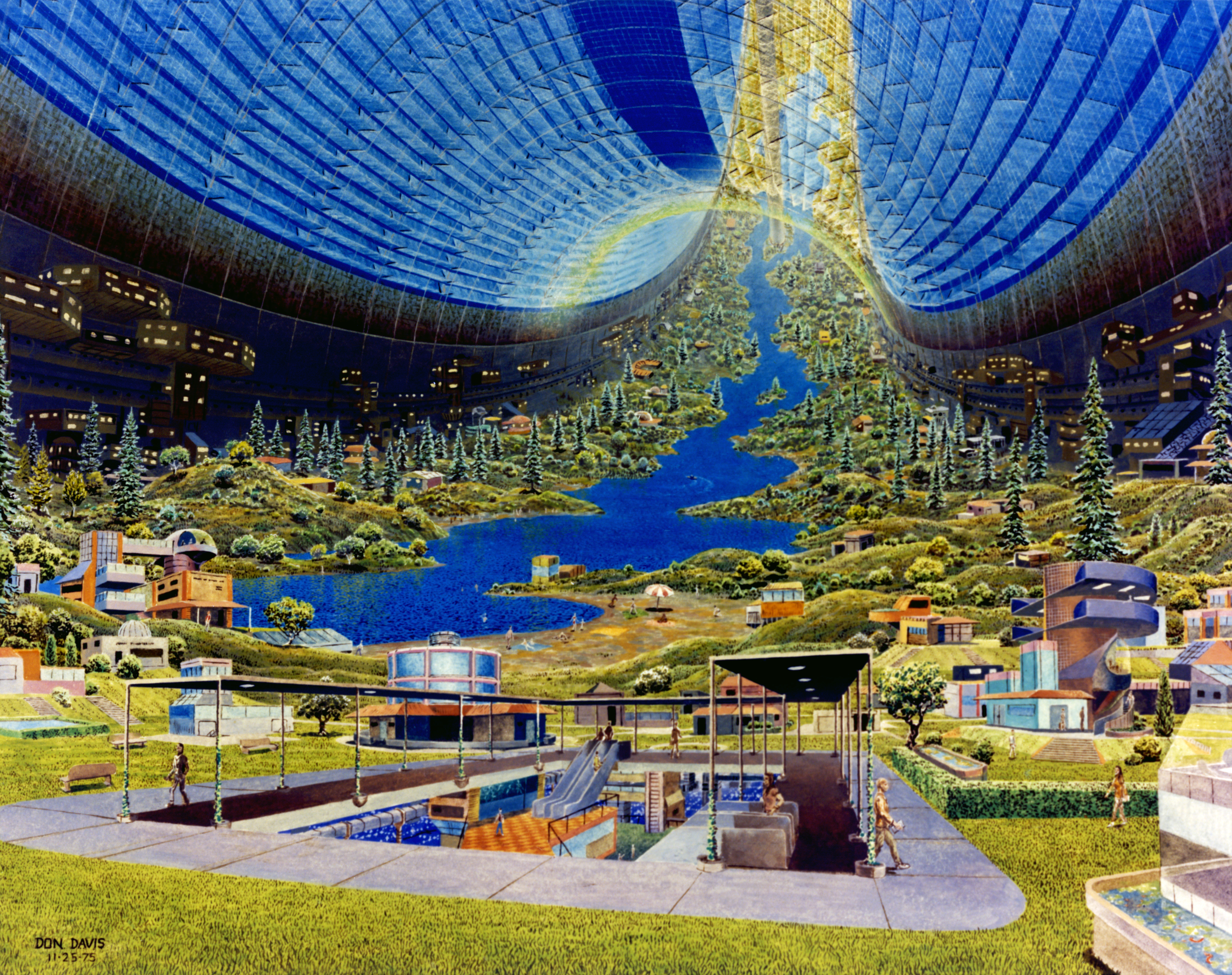
which reflects sunlight onto the angled ring of secondary mirrors around the hub.
Painting by Donald E. Davis
By Donald Davis - NASA Ames Research Centerhttps://settlement.arc.nasa.gov/70sArtHiRes/70sArt/art.htmlDescription and public domain image at artist's web sitehttps://www.donaldedavis.com/PARTS/allyours.html, Public Domain, Link
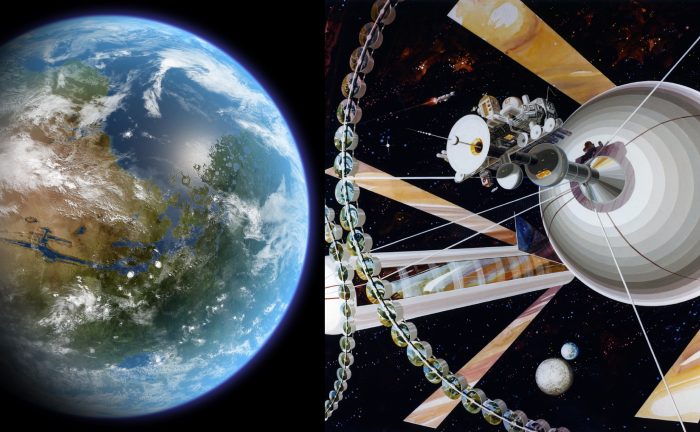
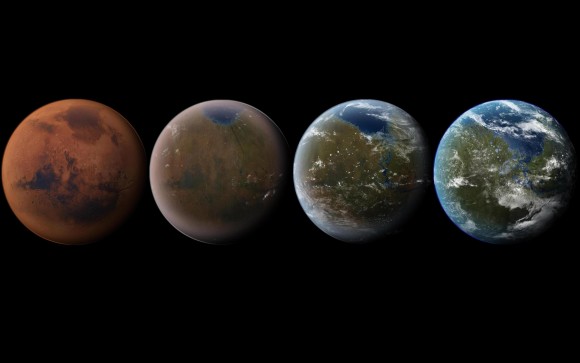
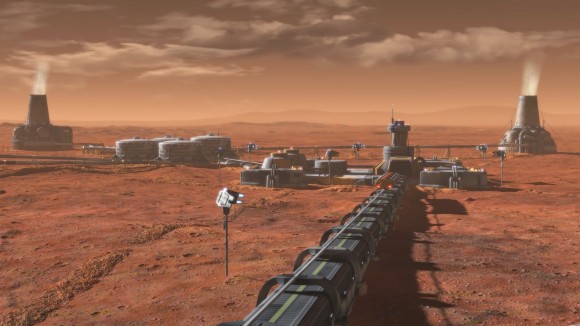
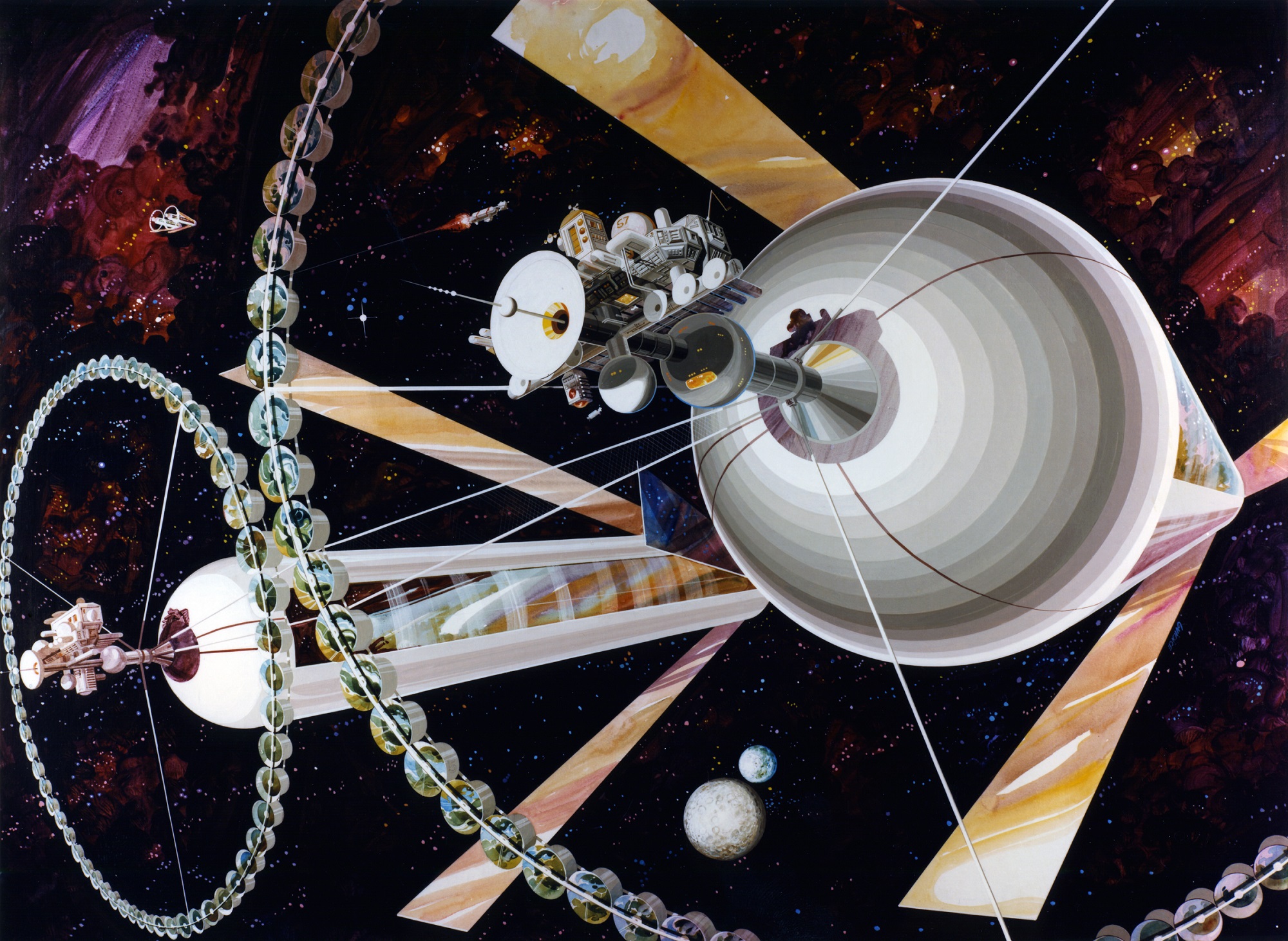

A RECENT (July, 2017)NASA COMPETITION
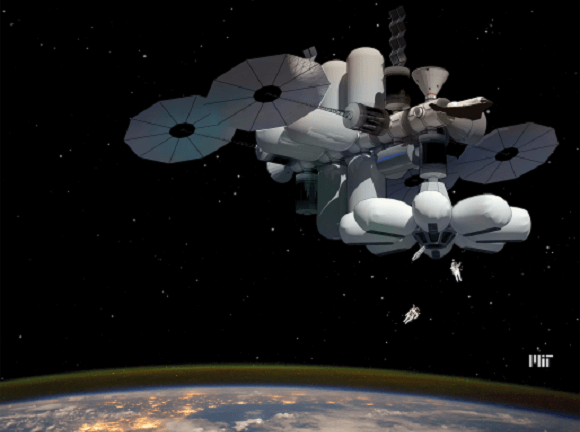
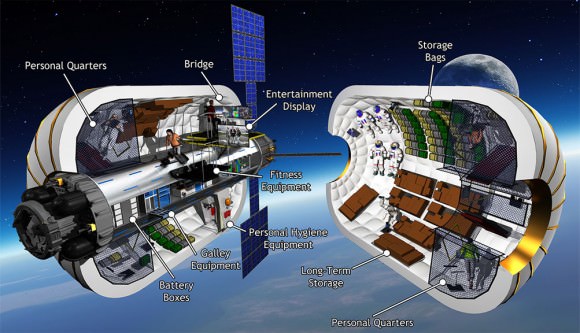
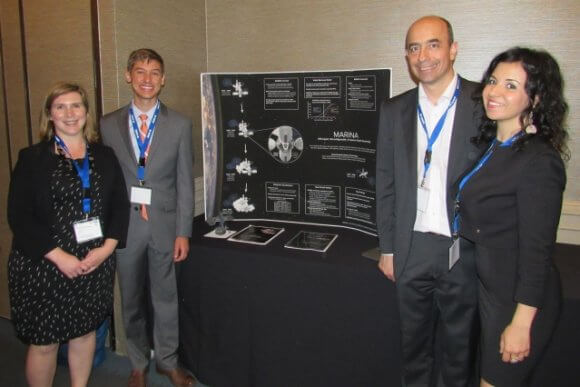
Asgardia: a New space nation
Asgardia: Prposed Space Naion in space
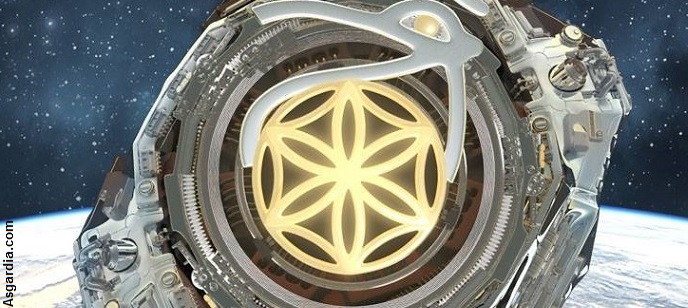
THE AURORA STATION WILL BE THE FIRST LUXURY HOTEL IN SPACE
